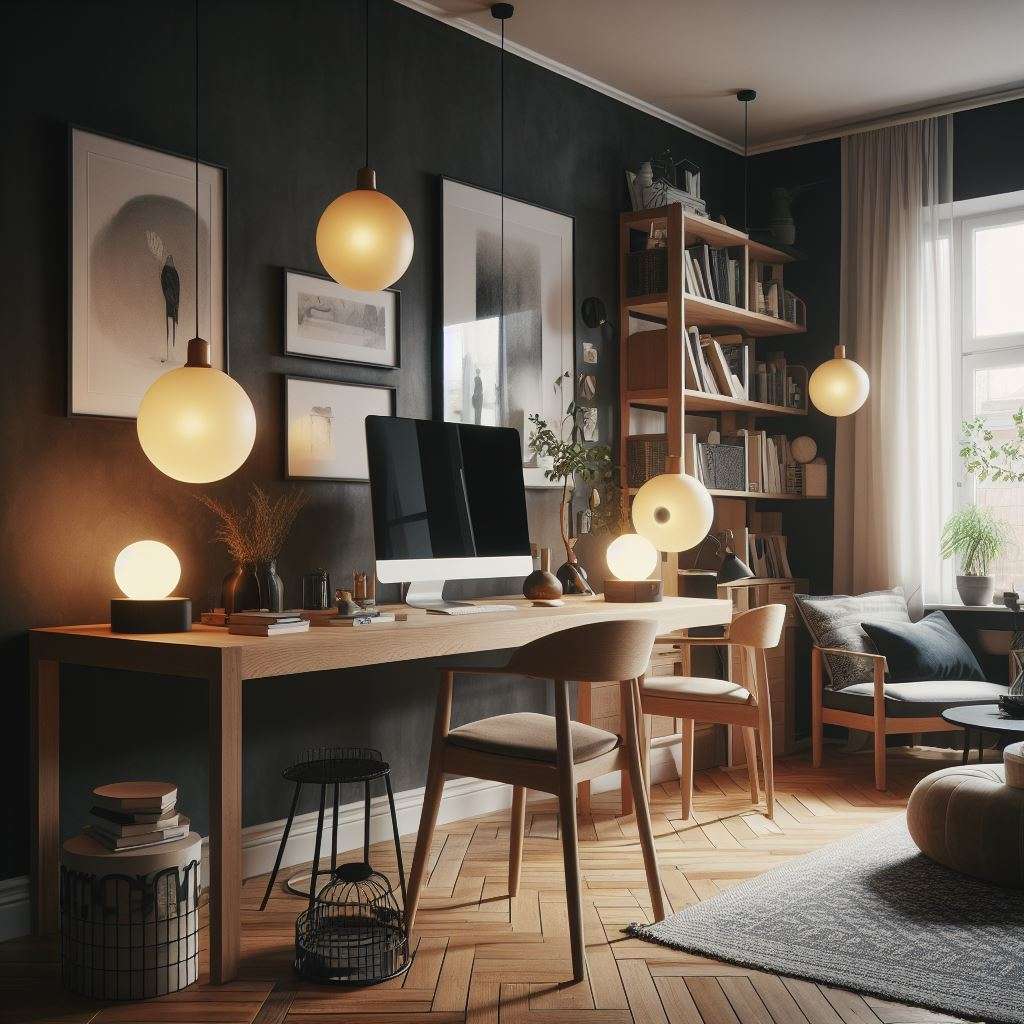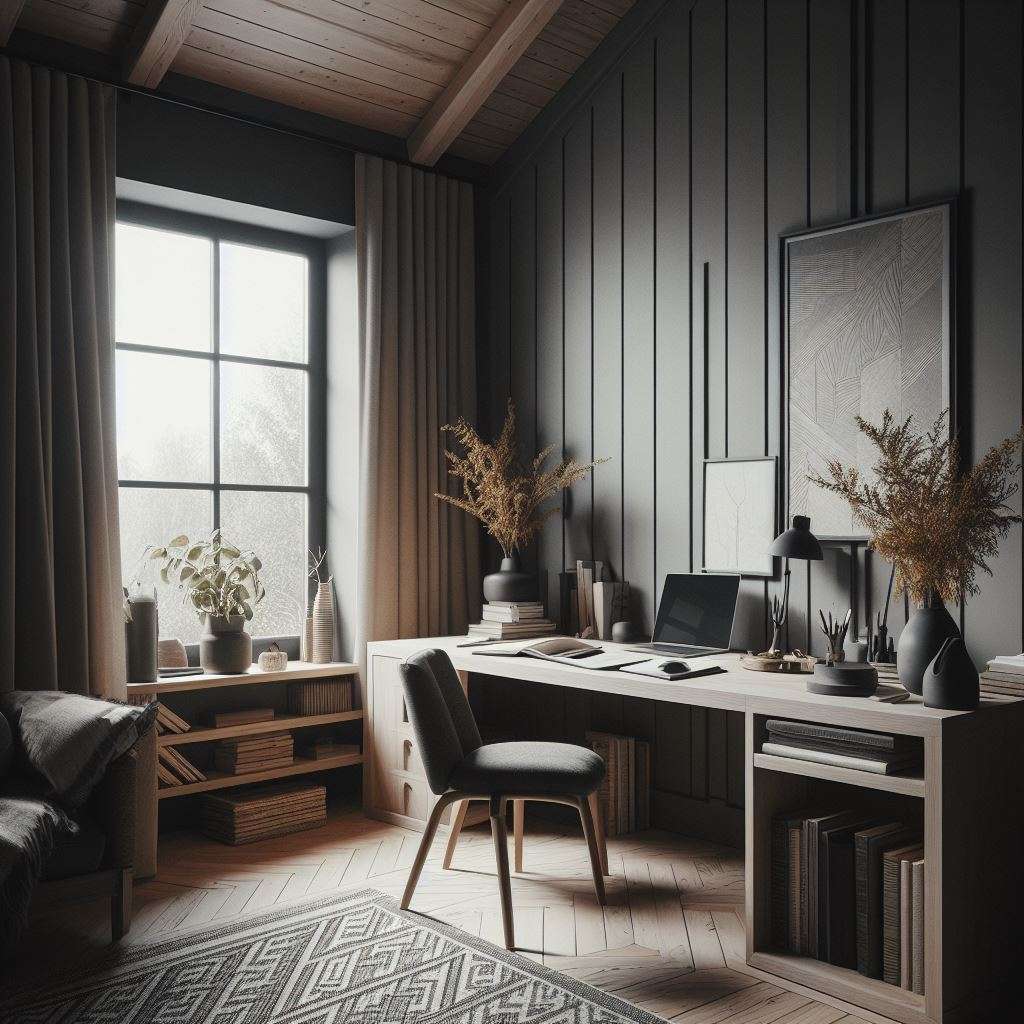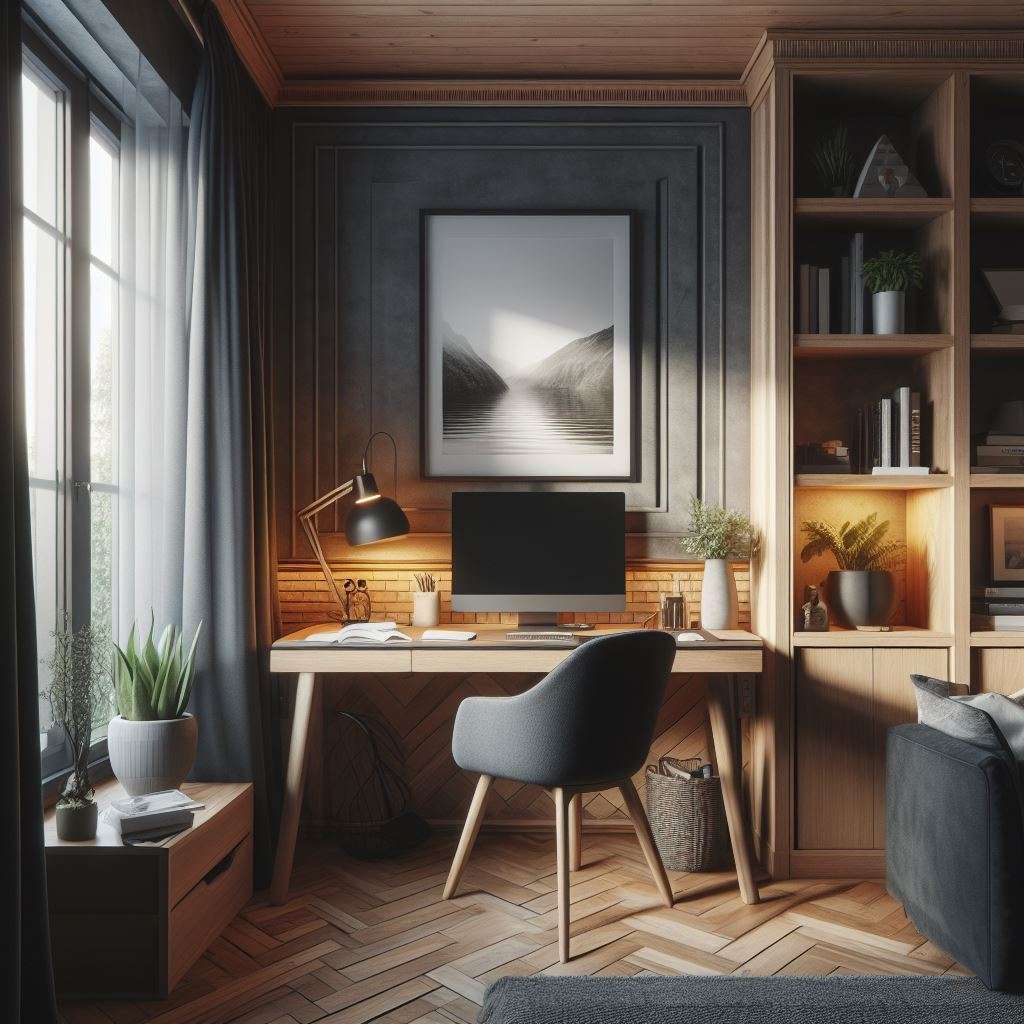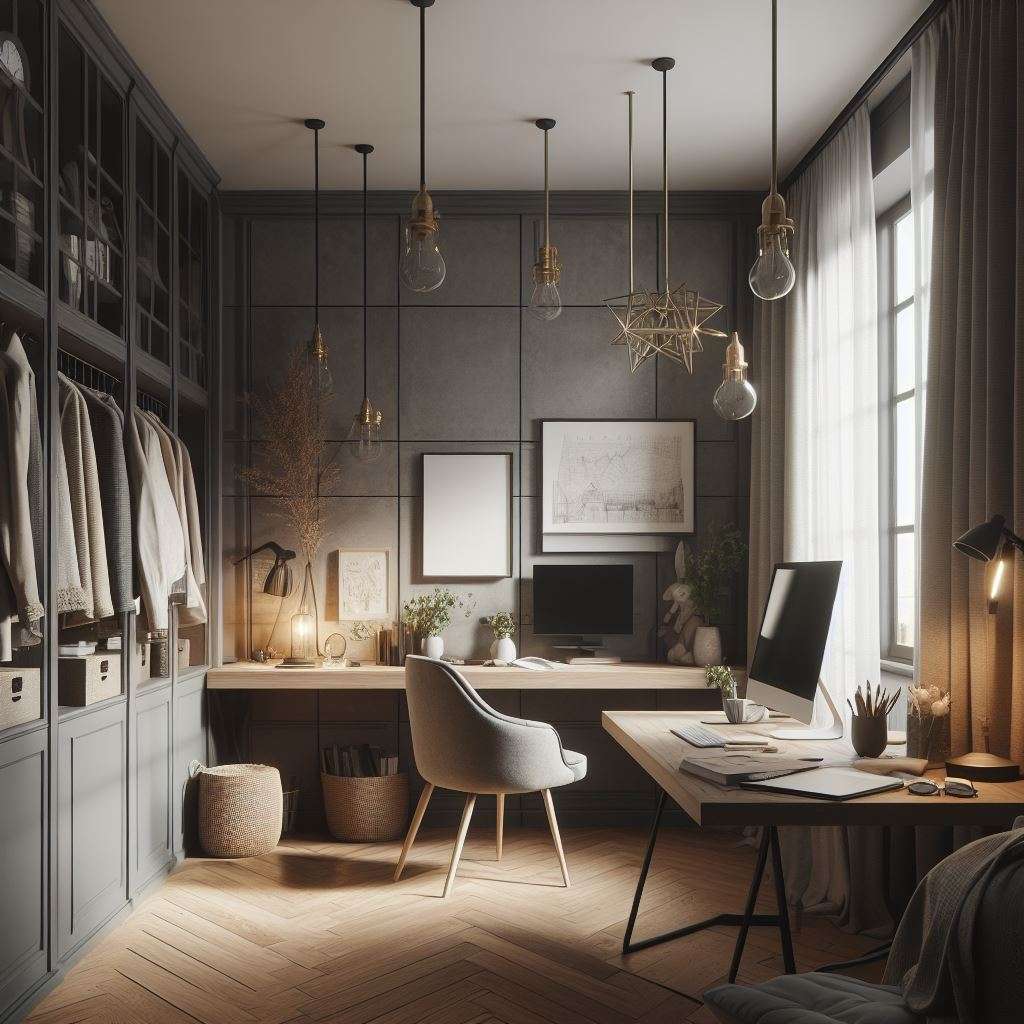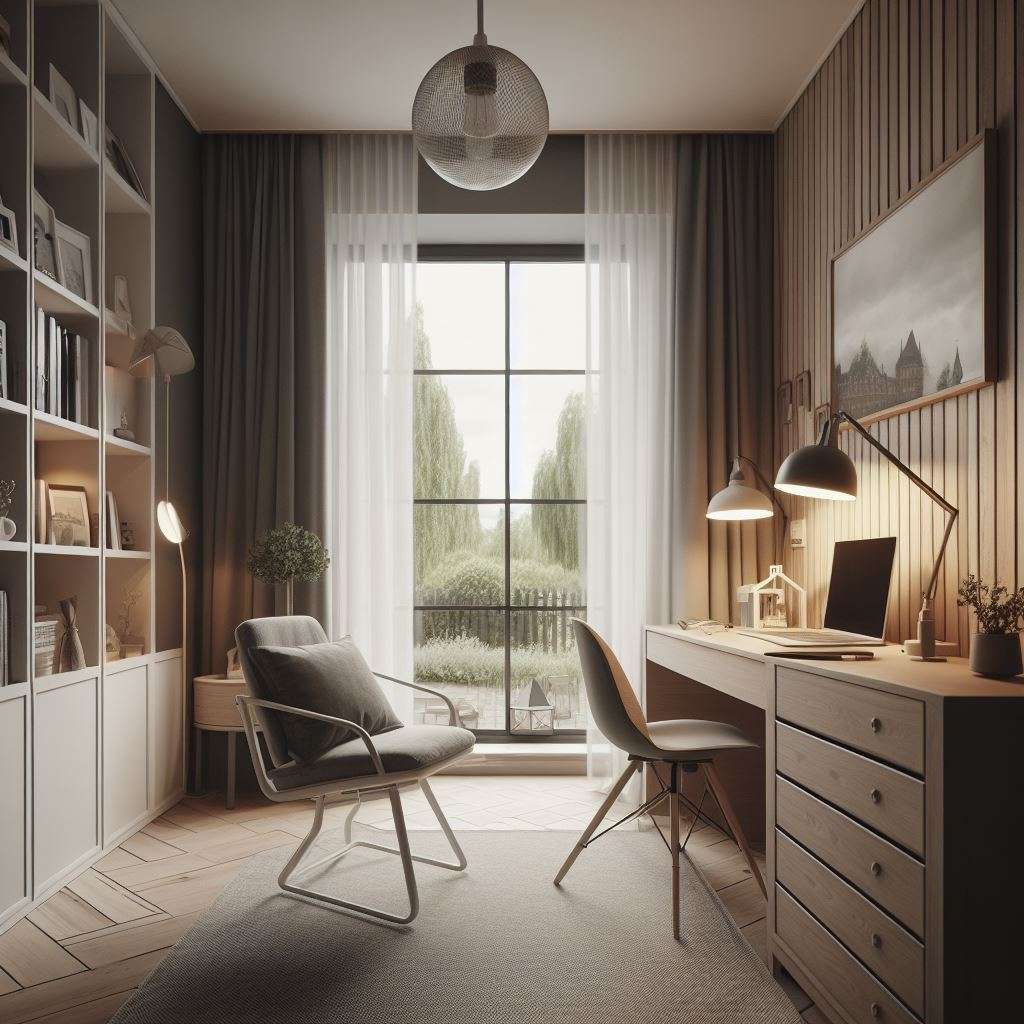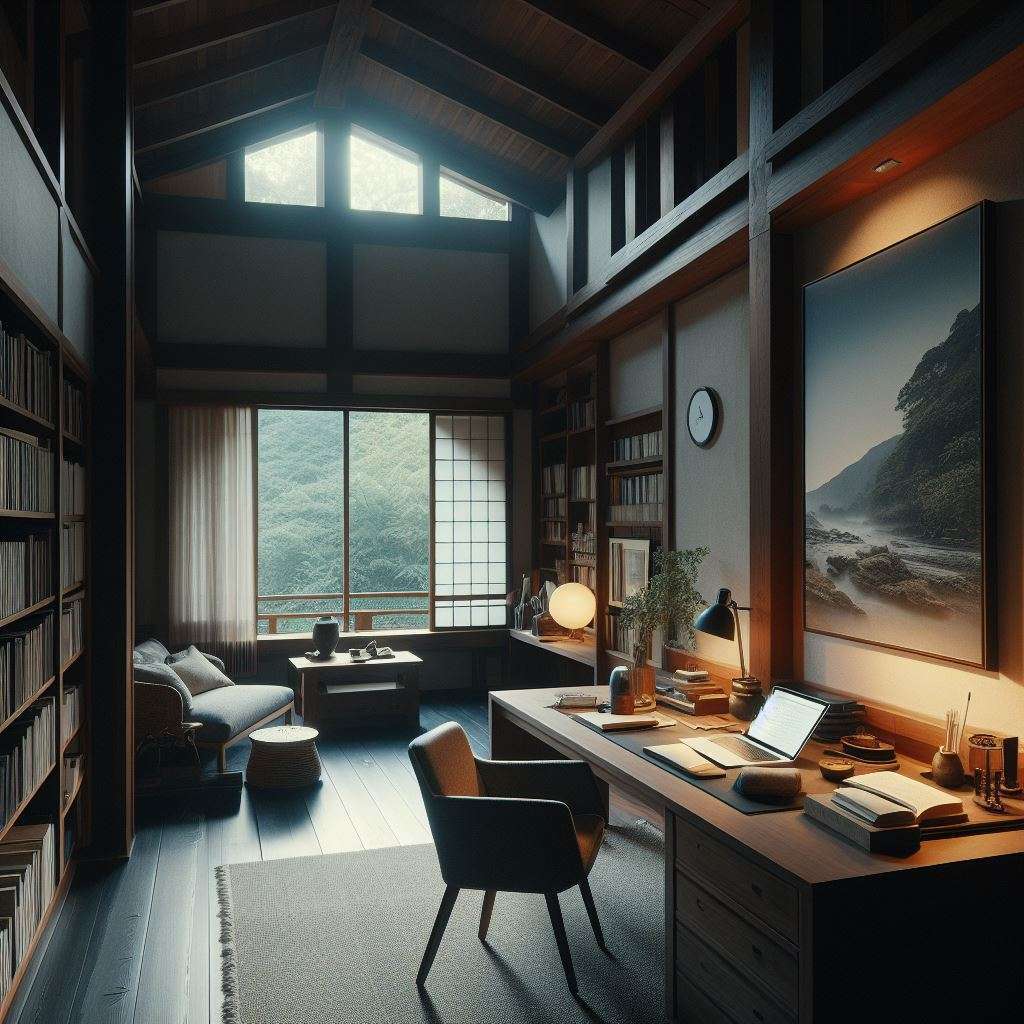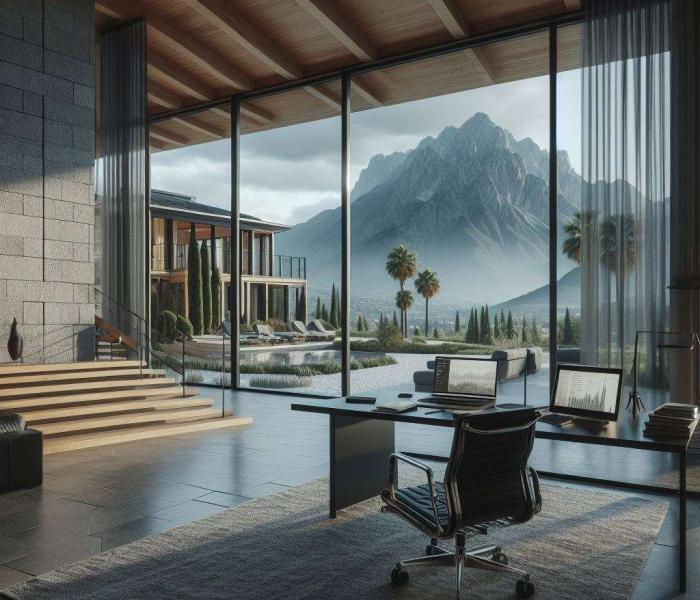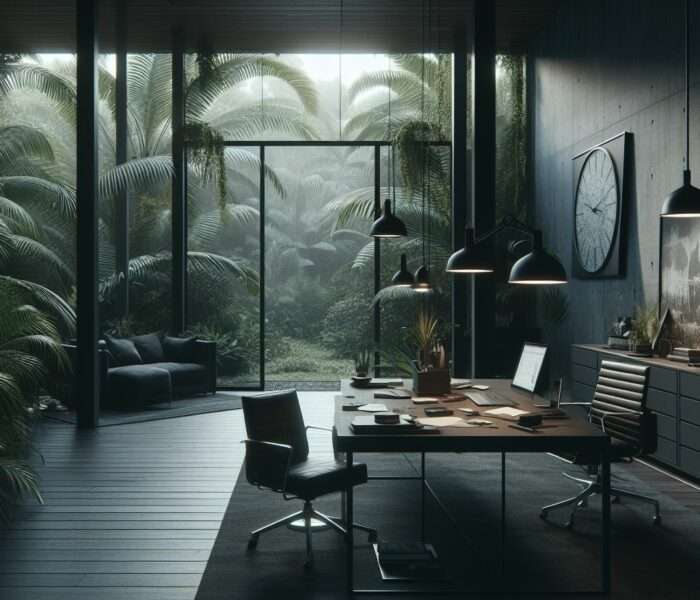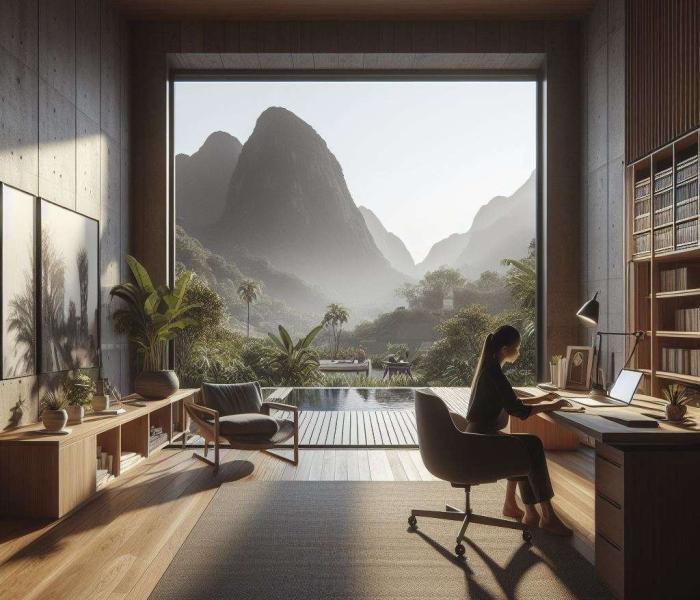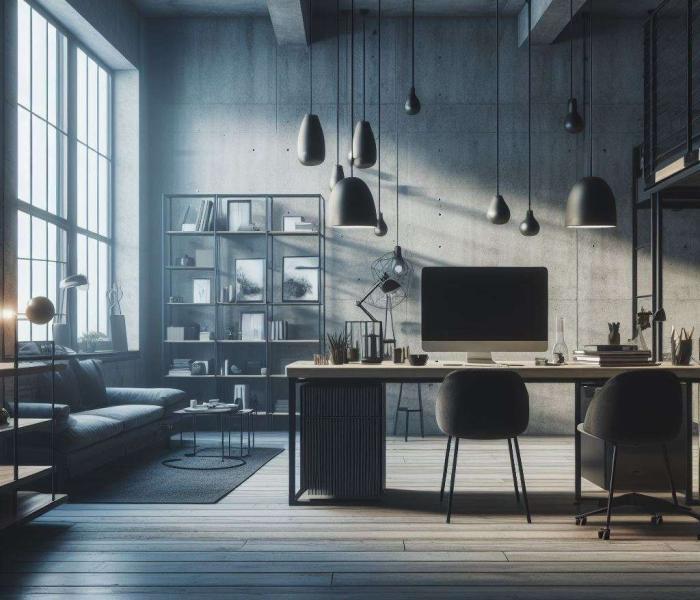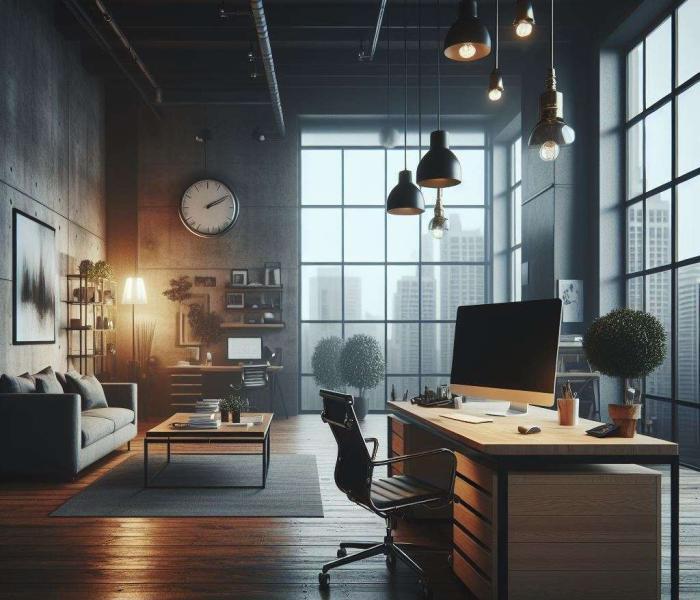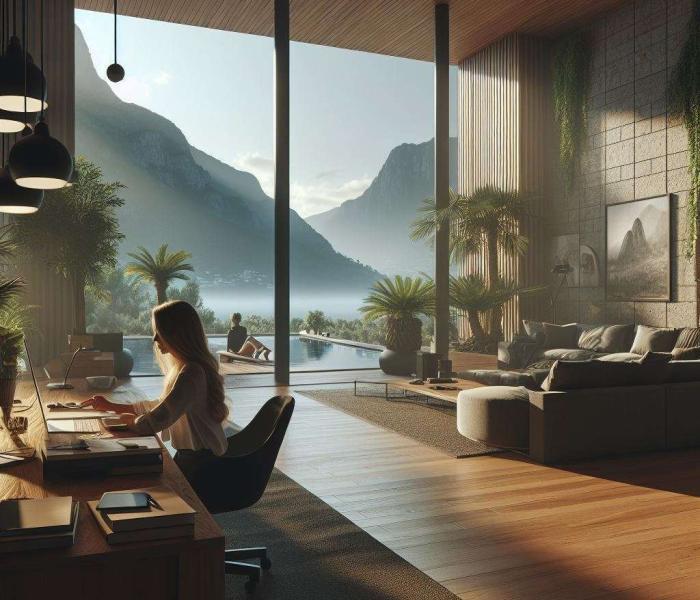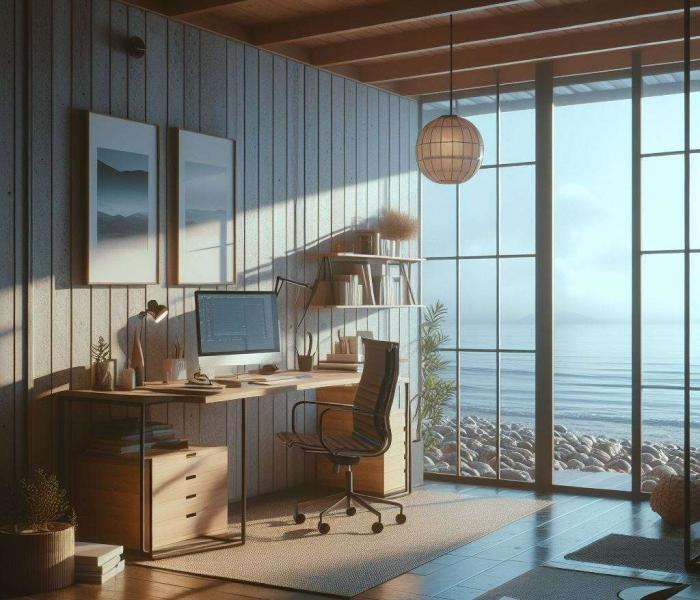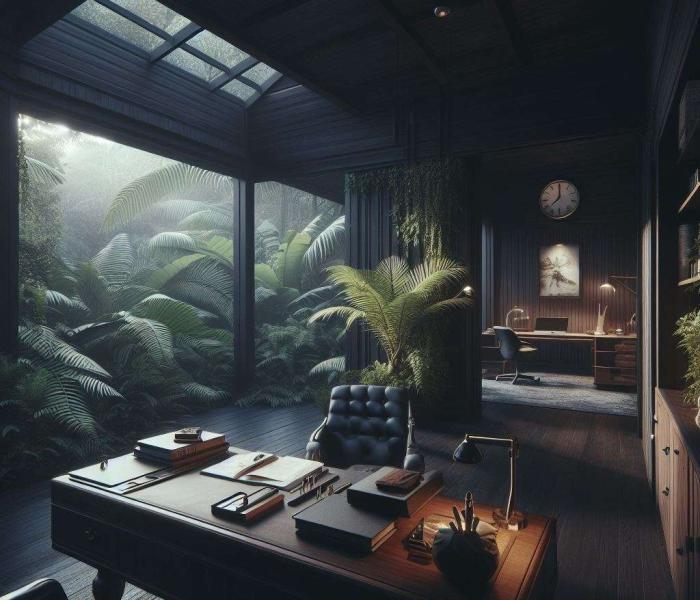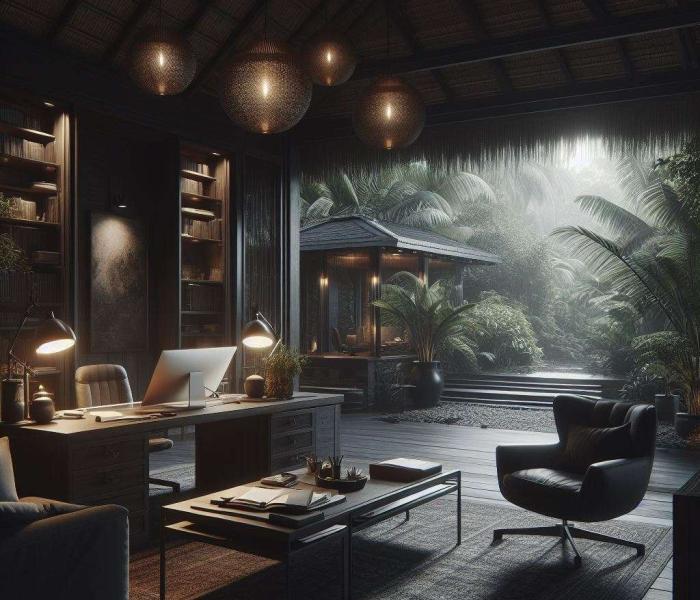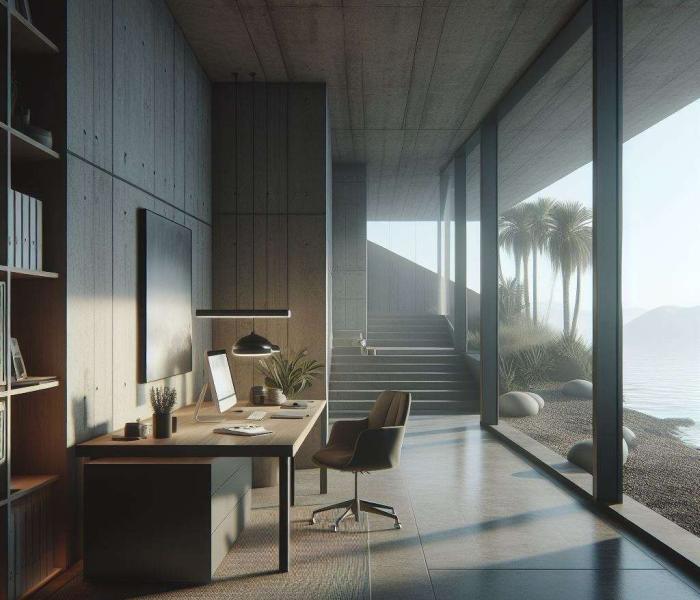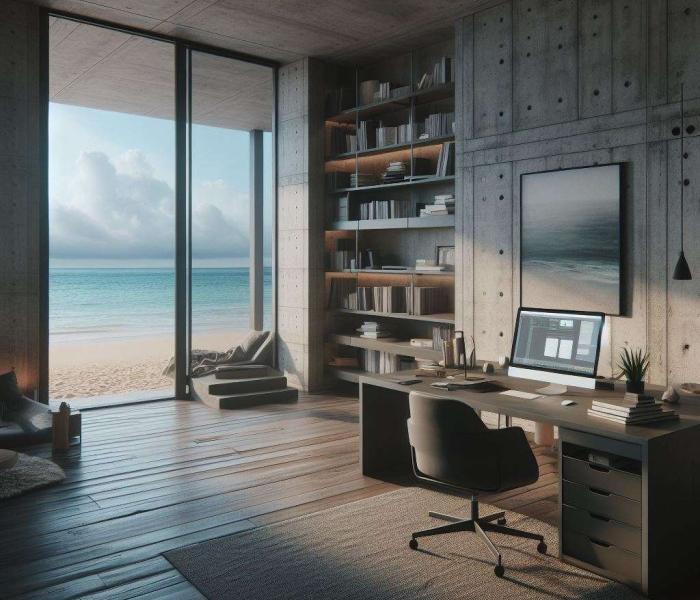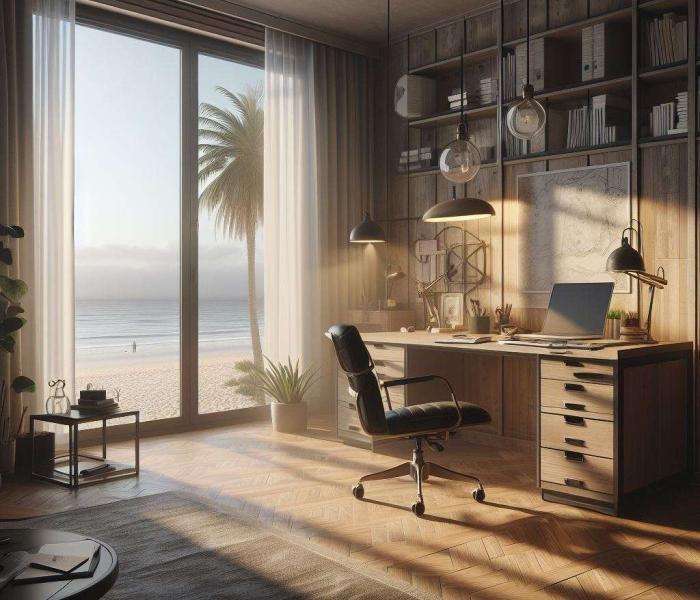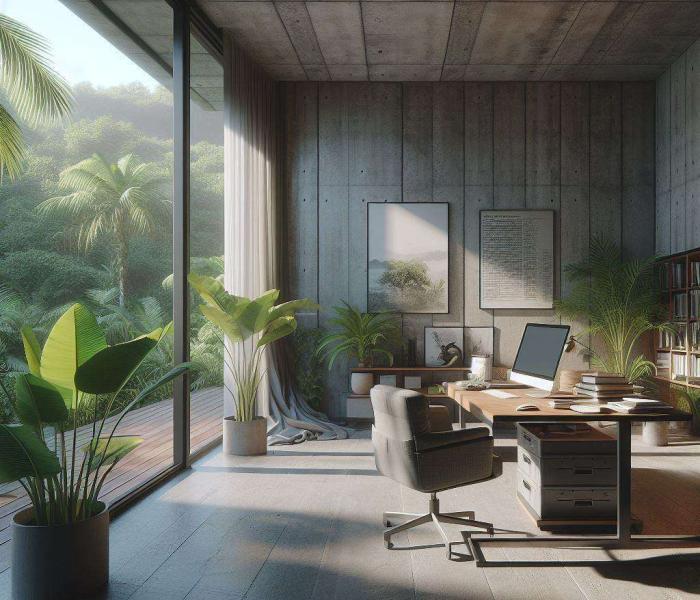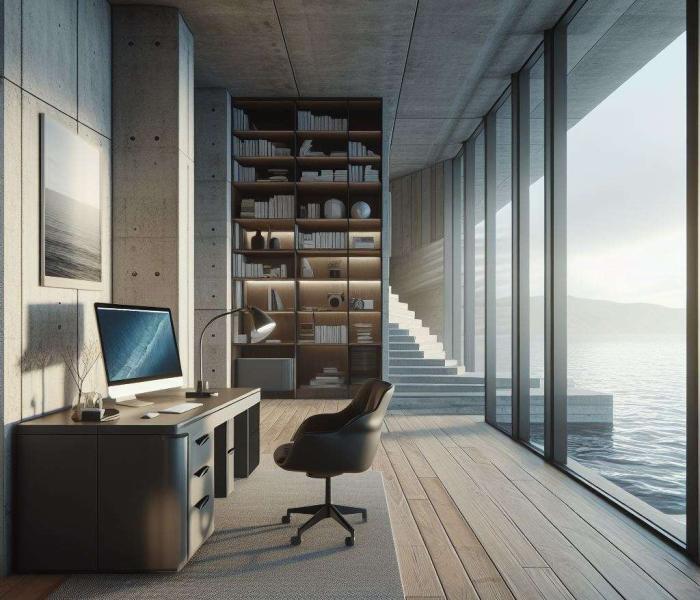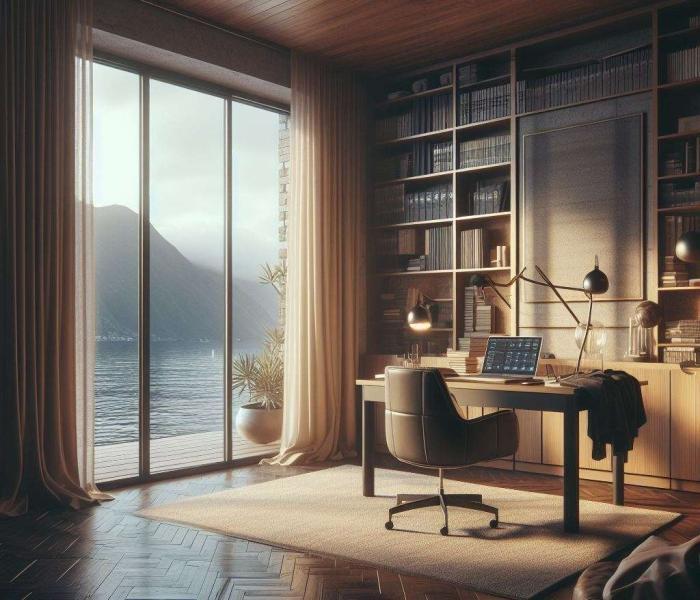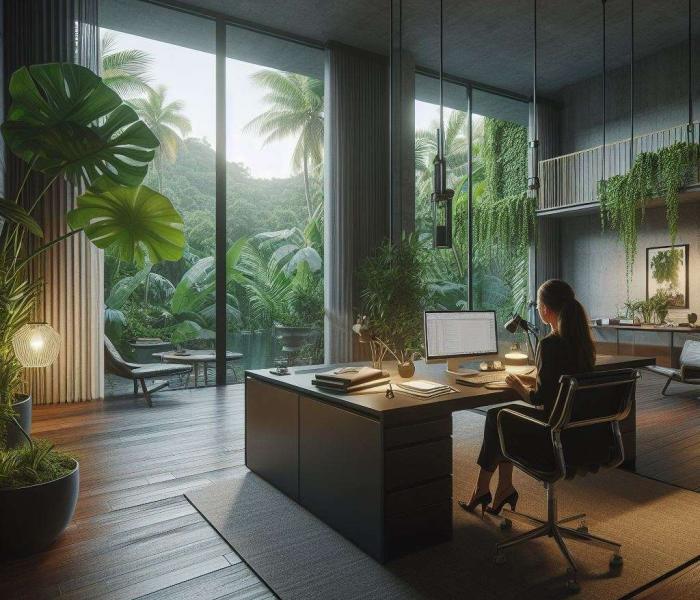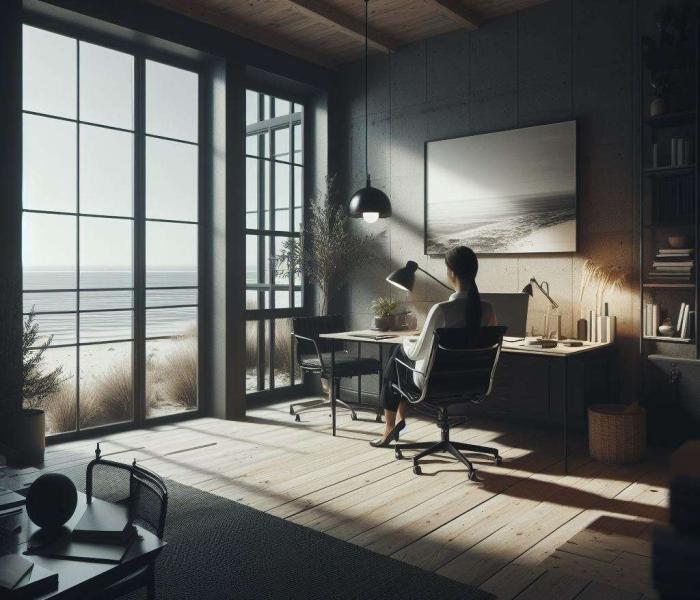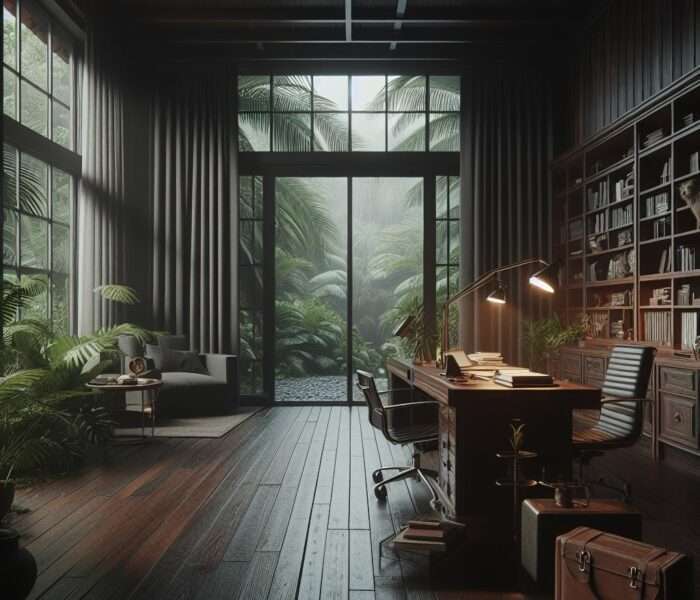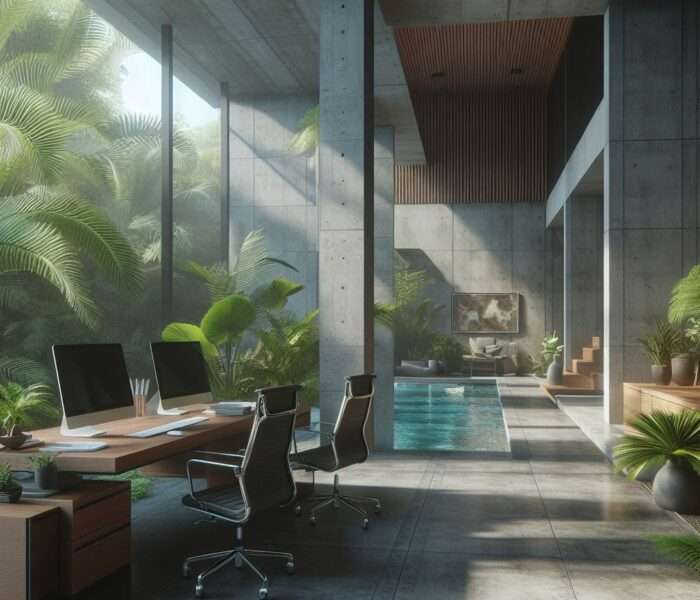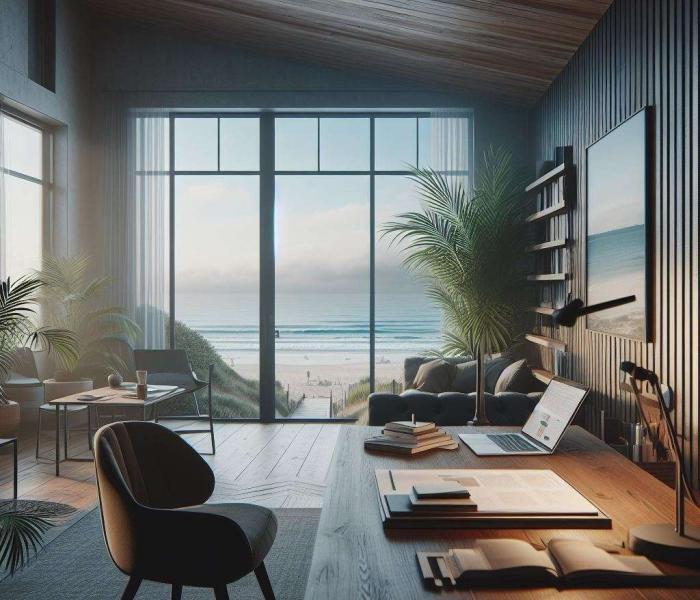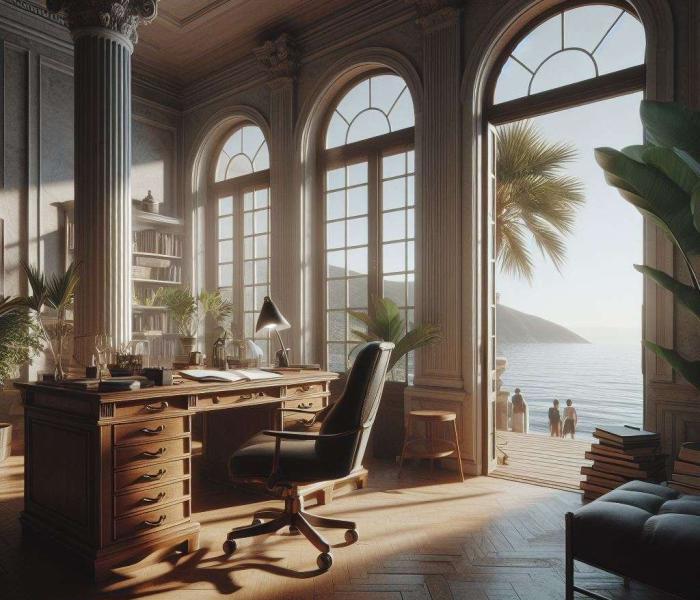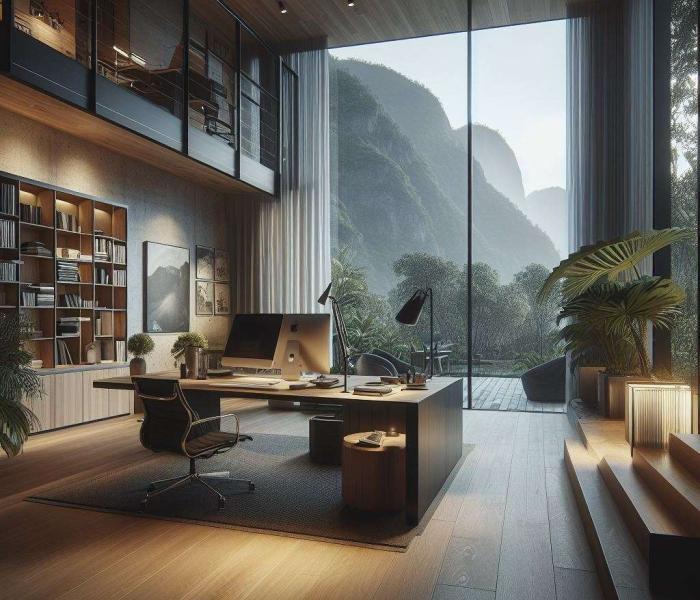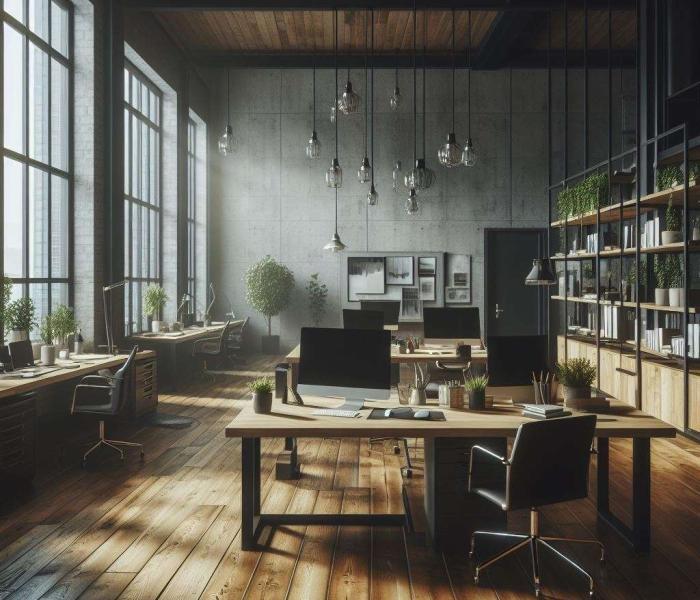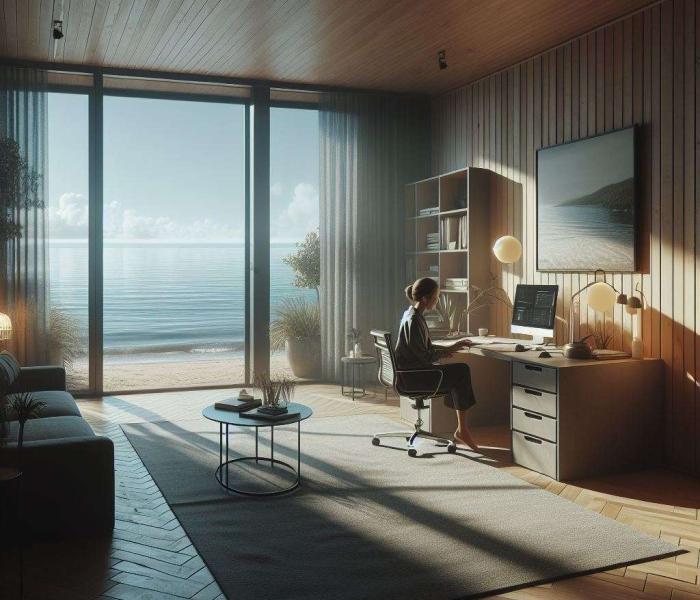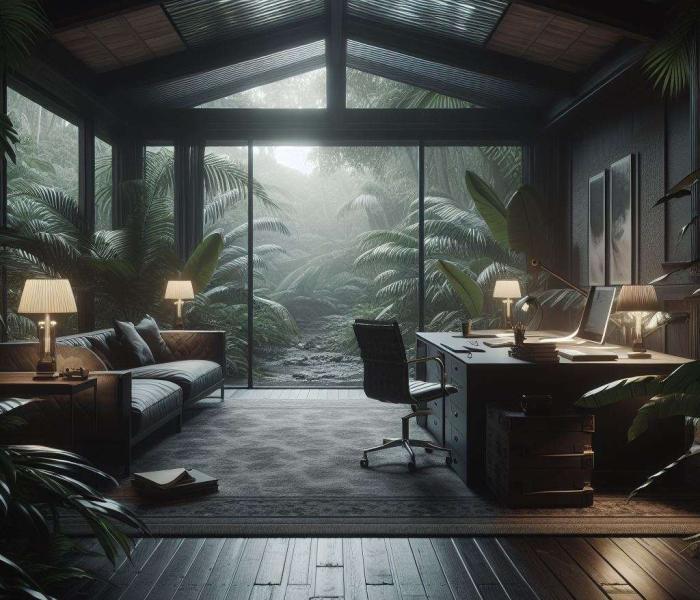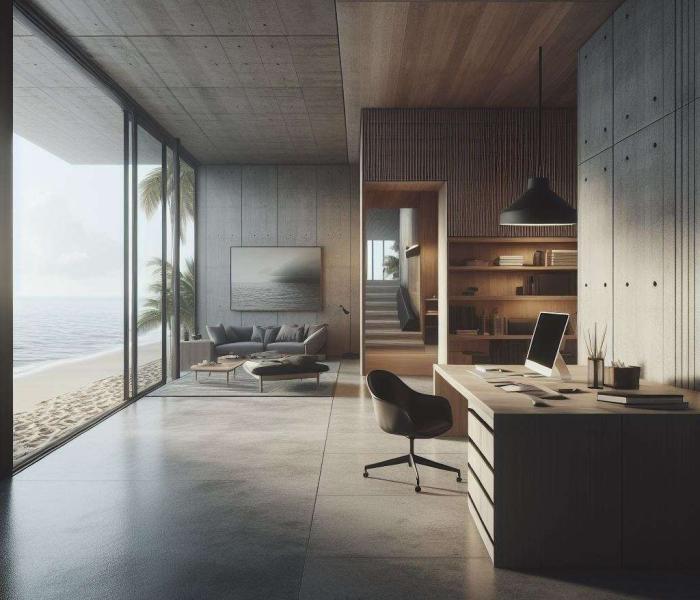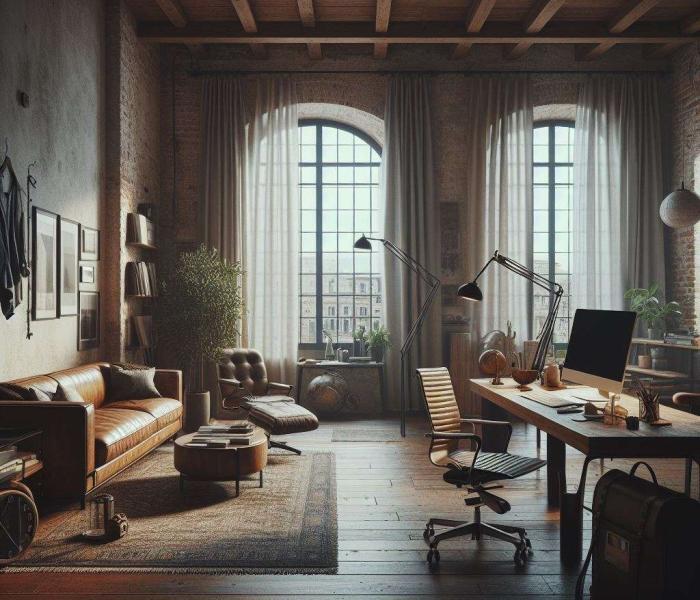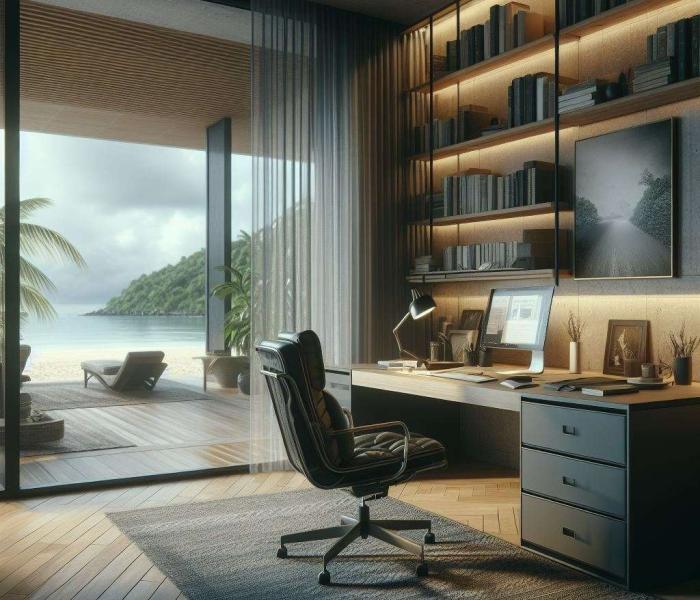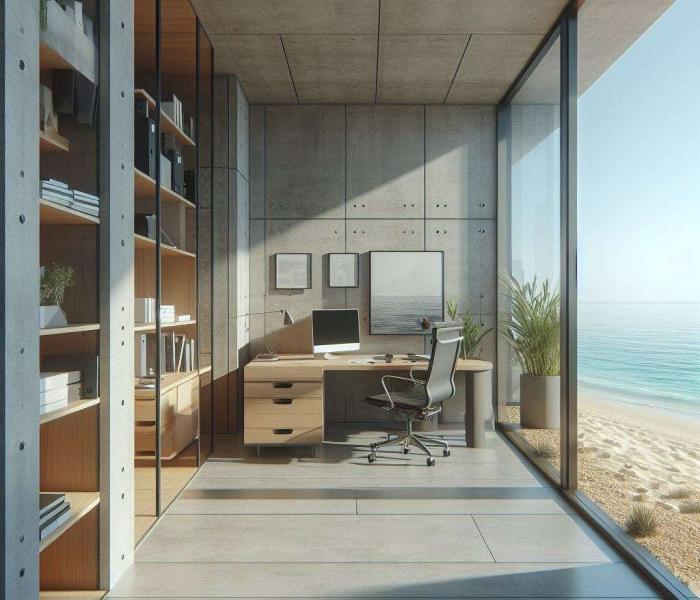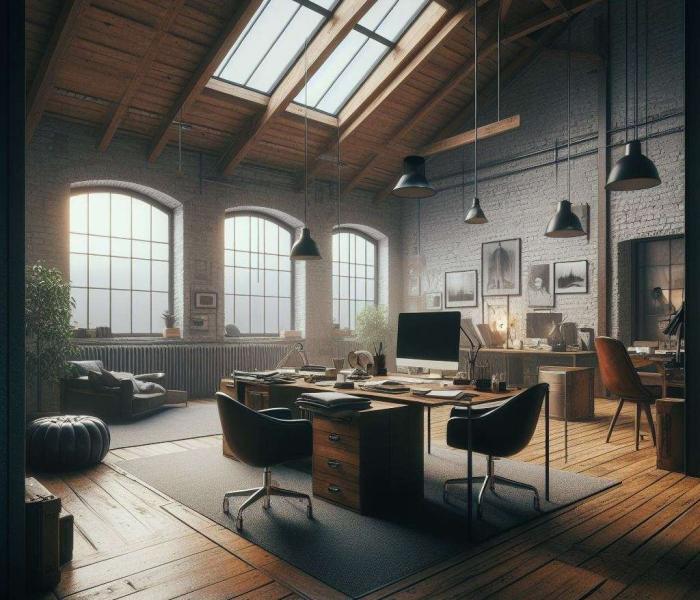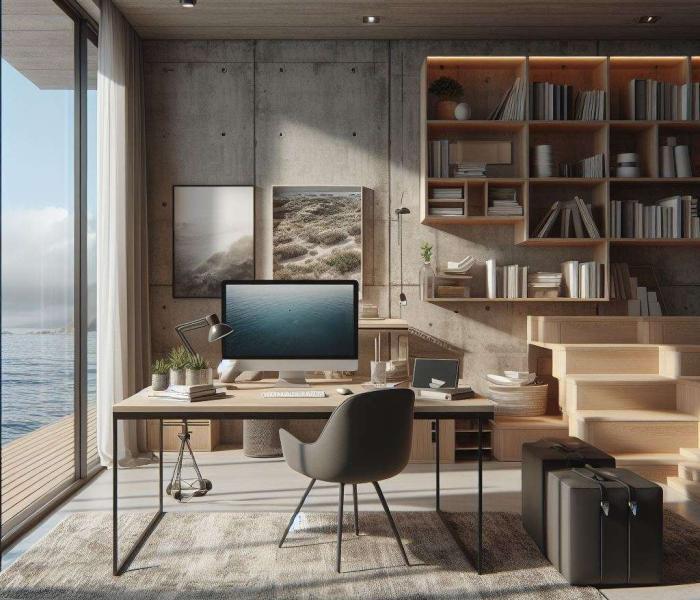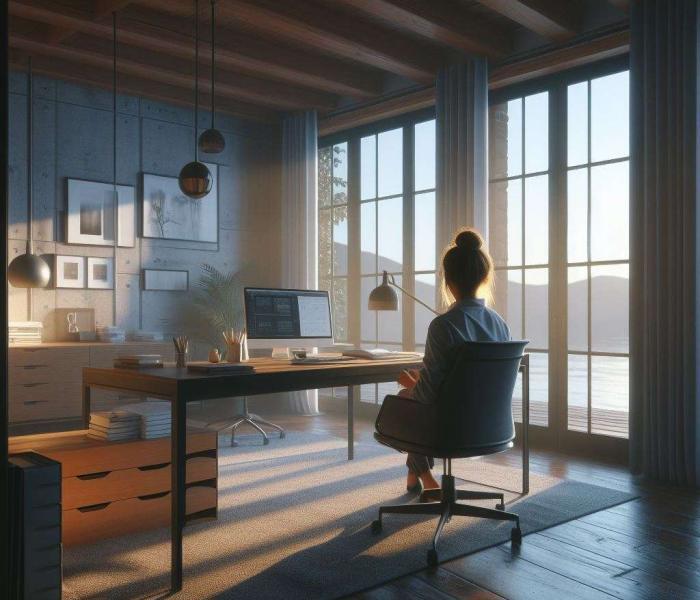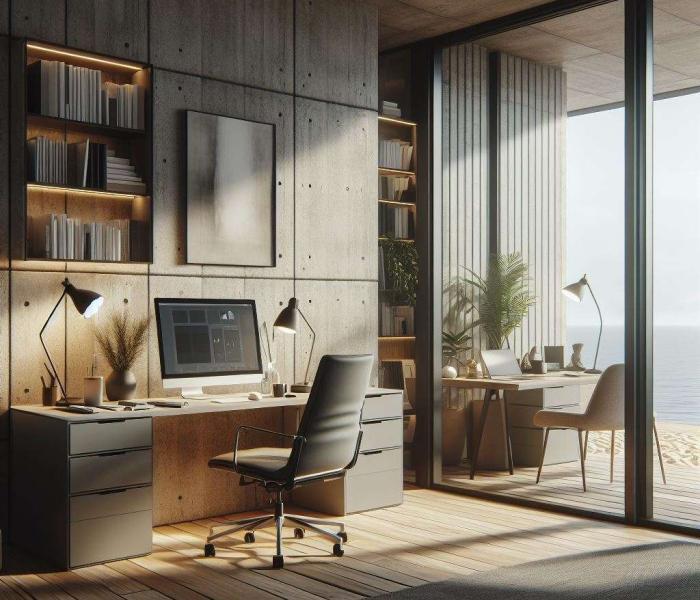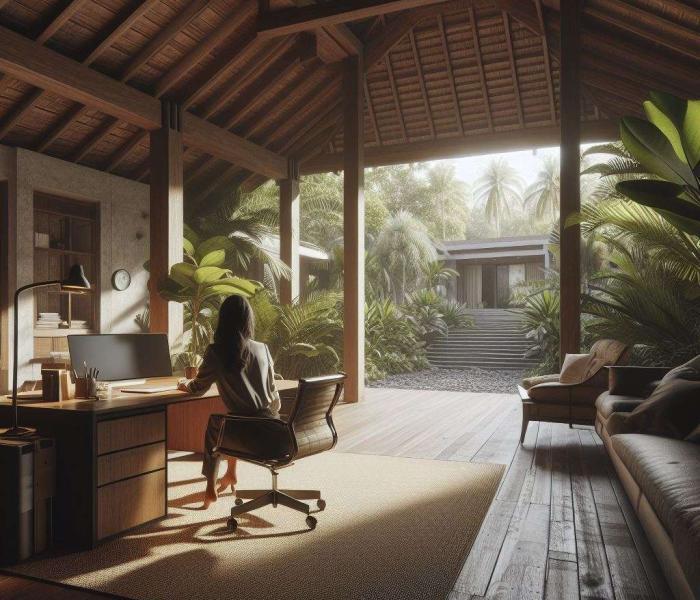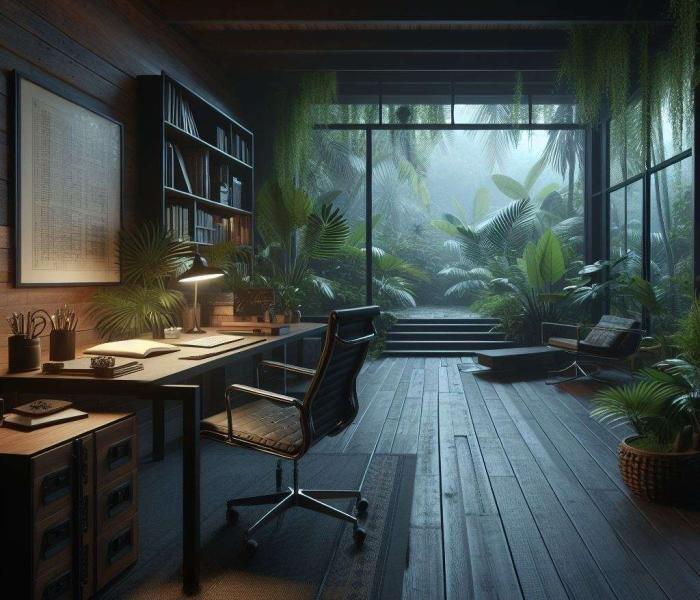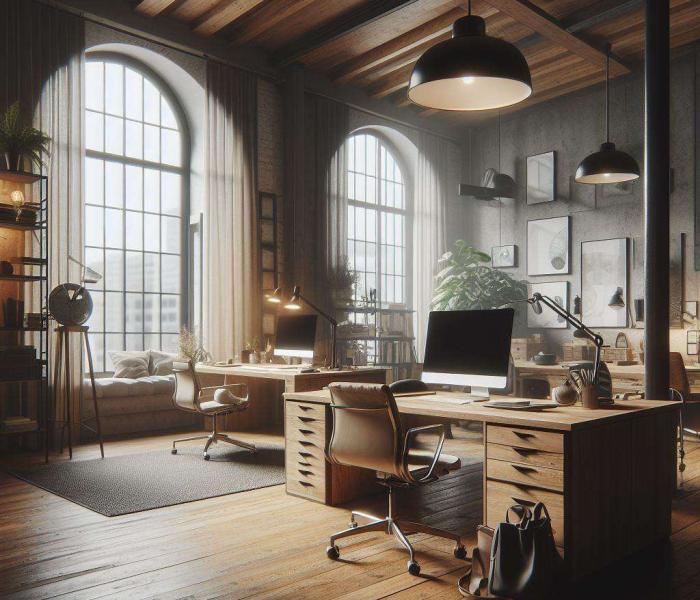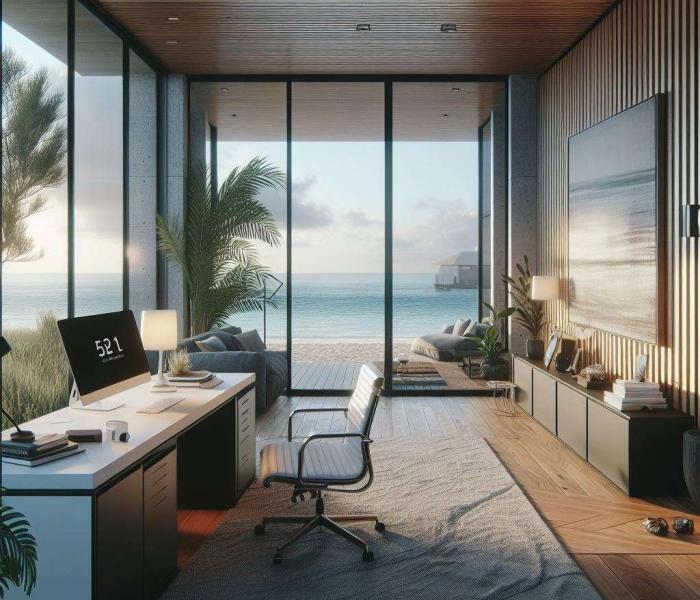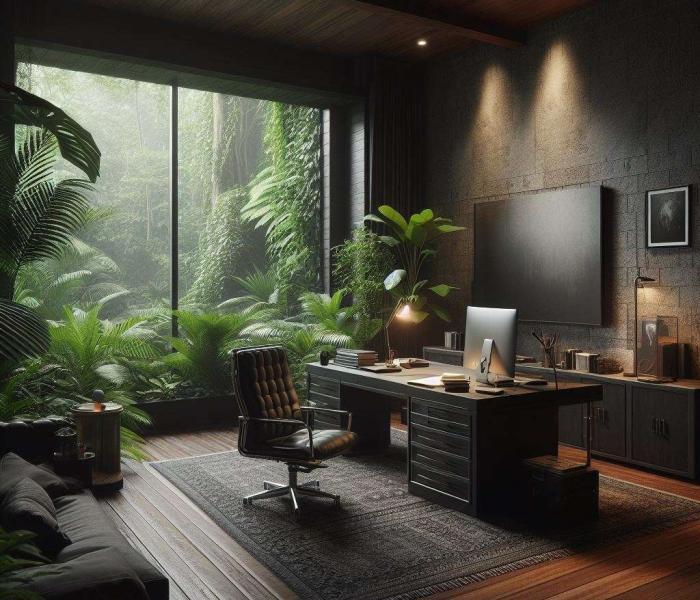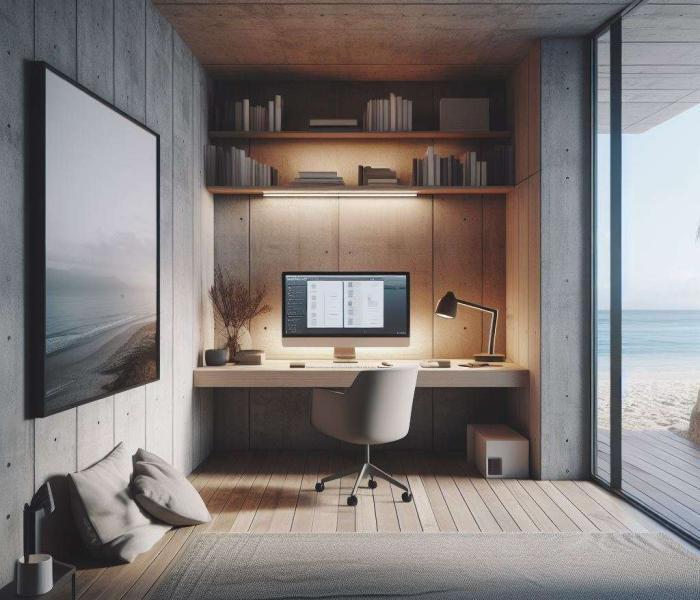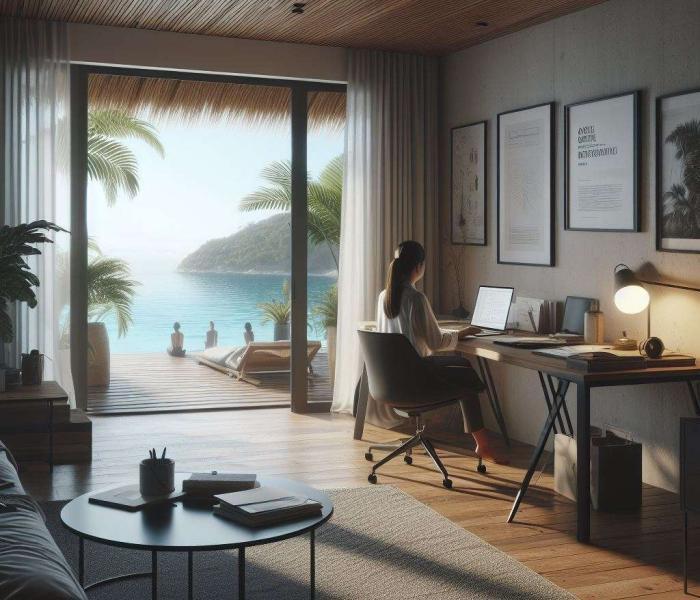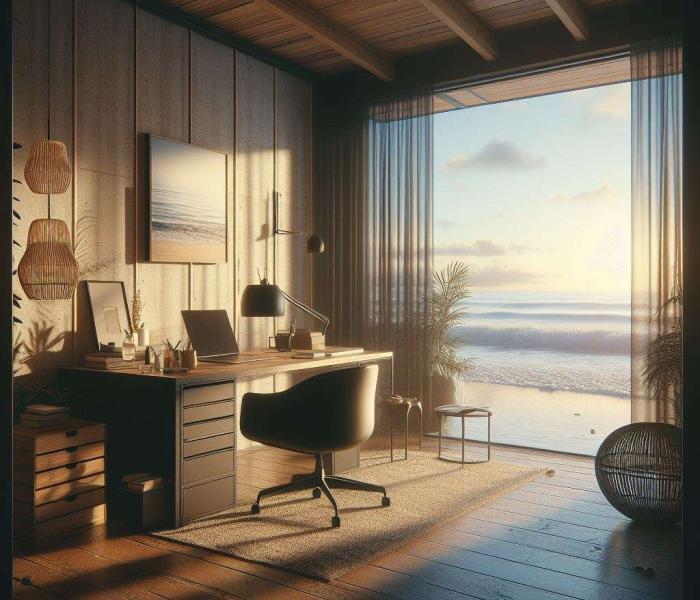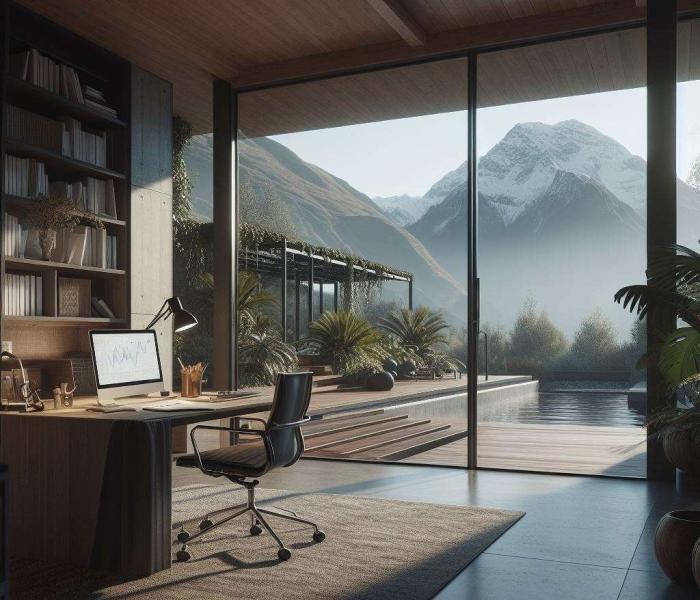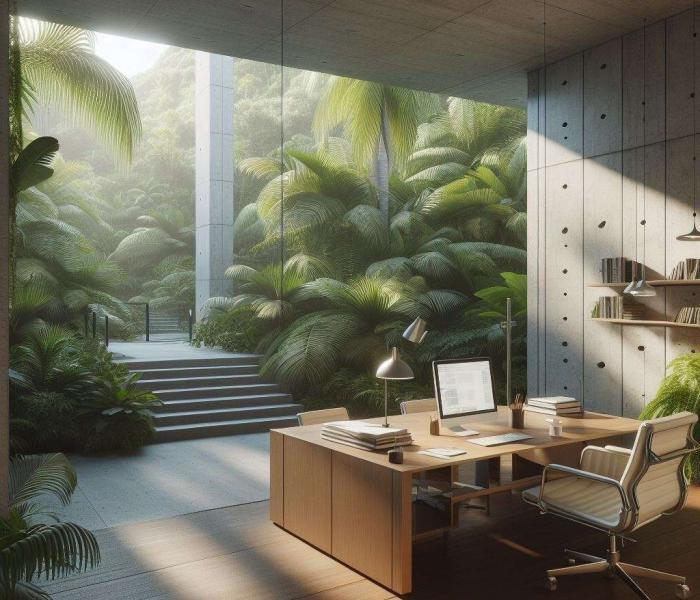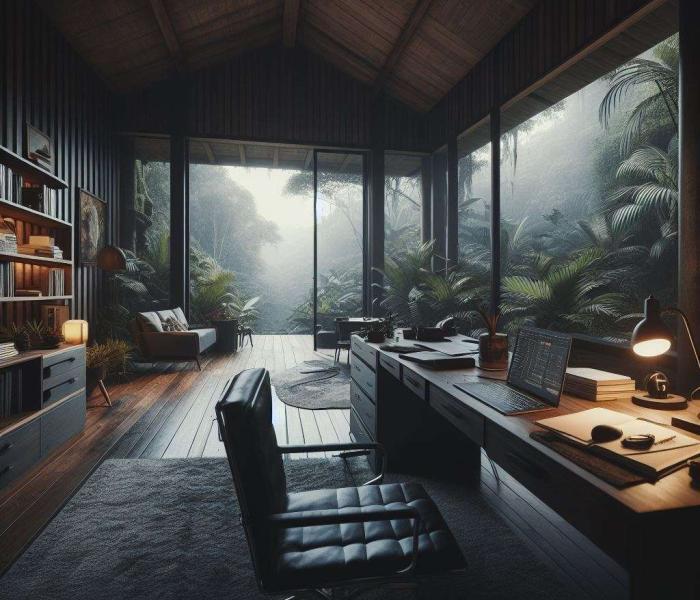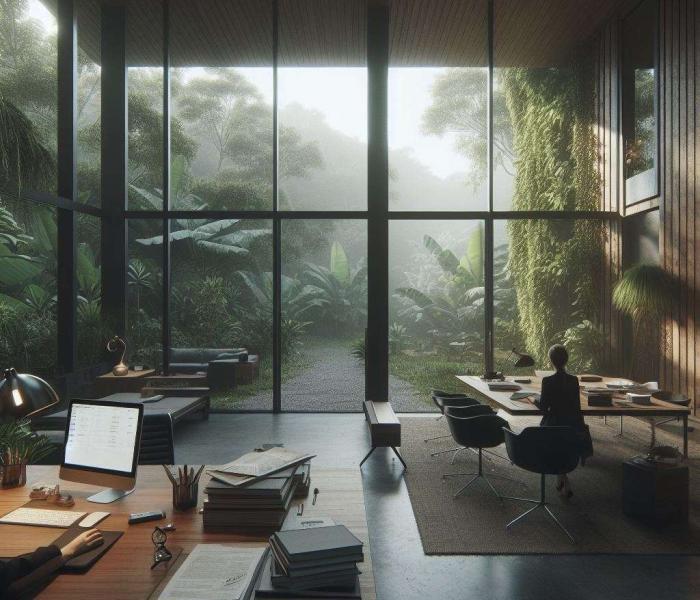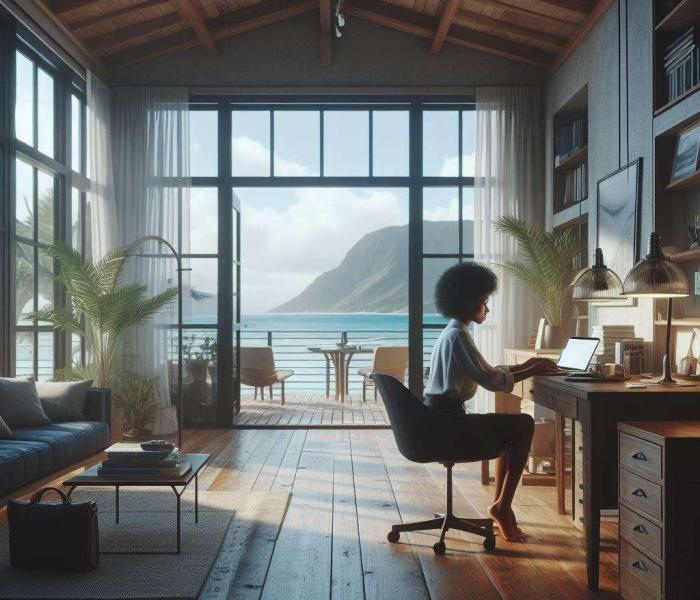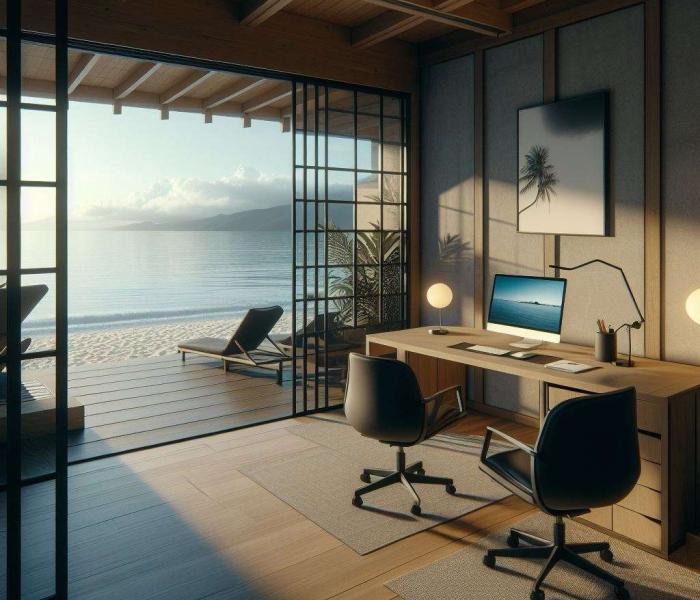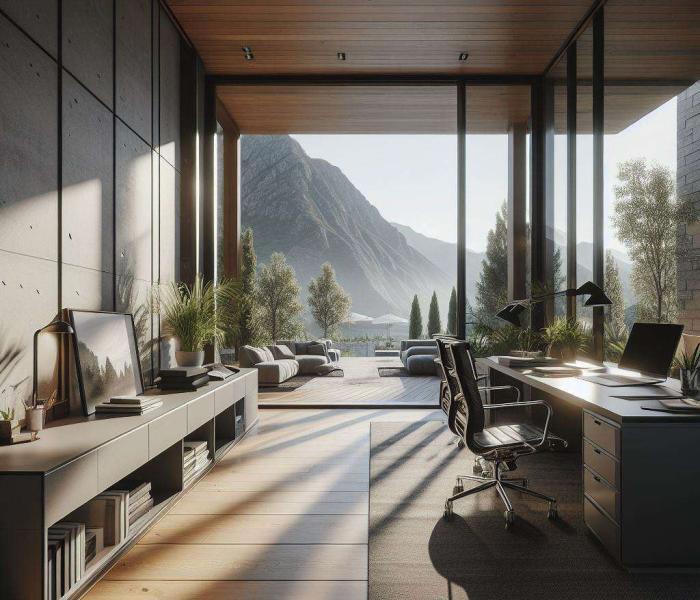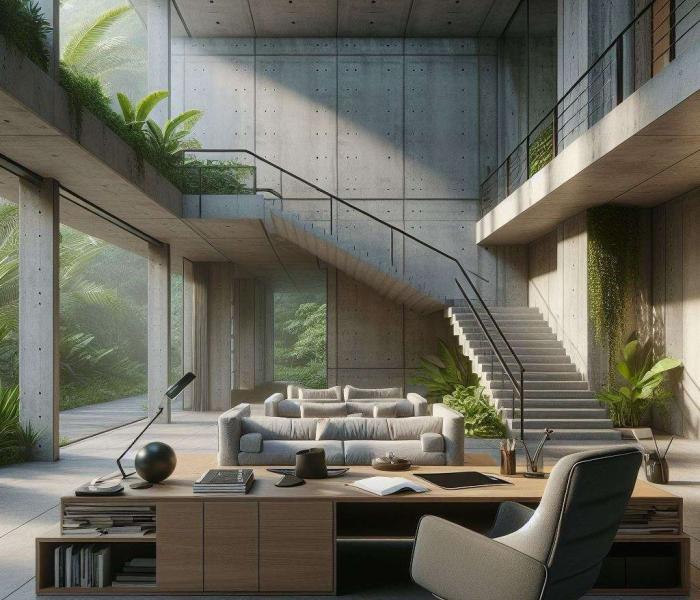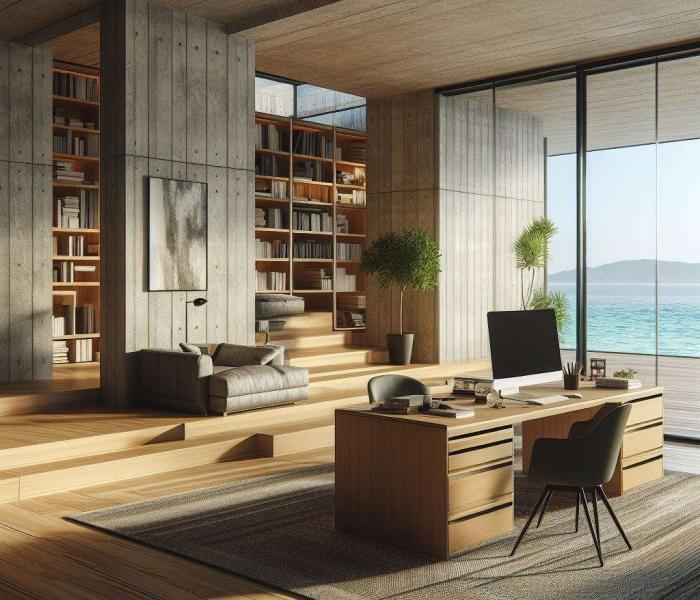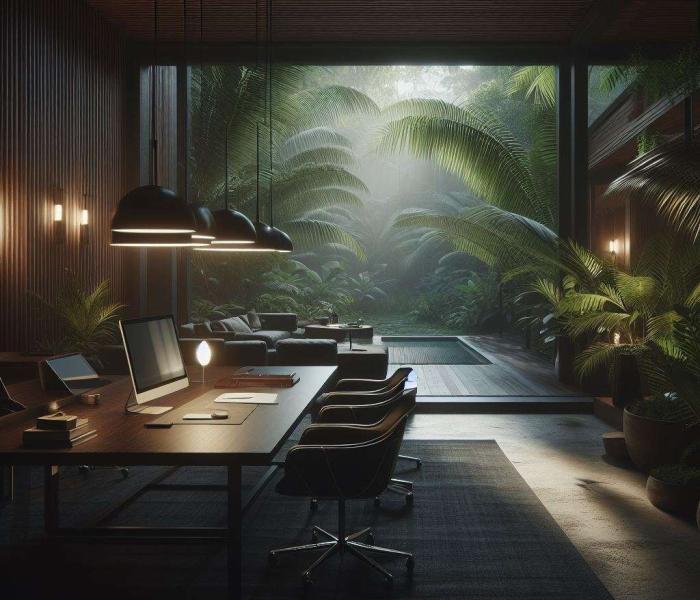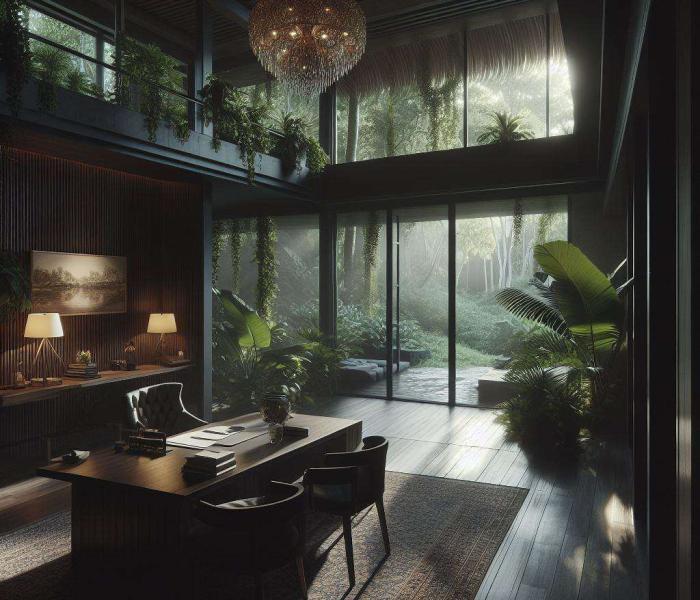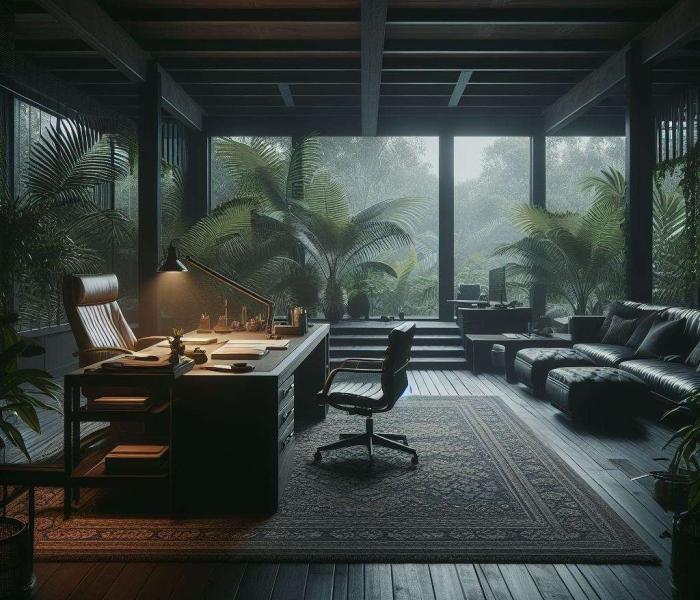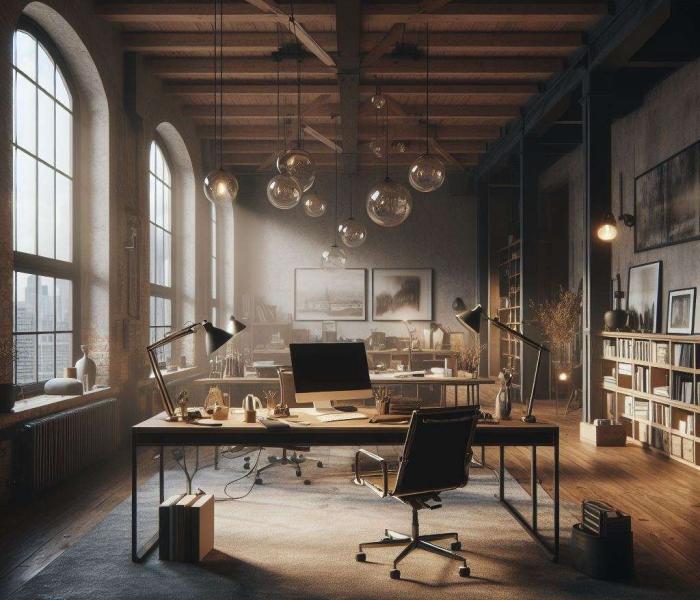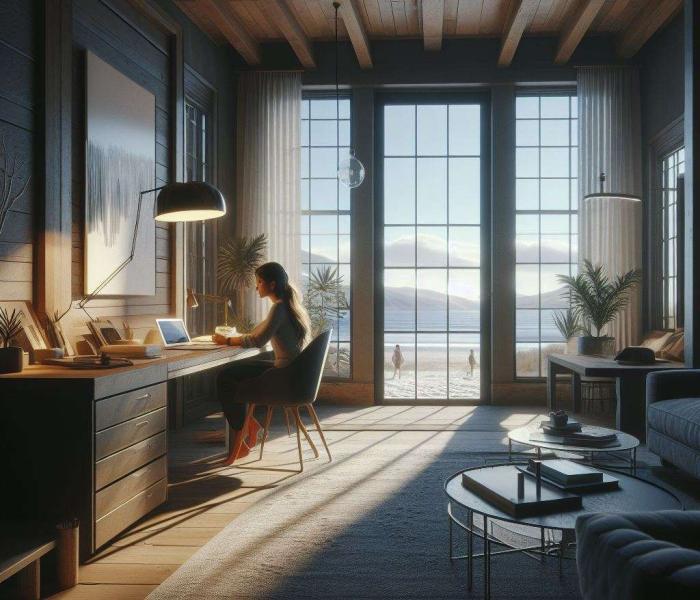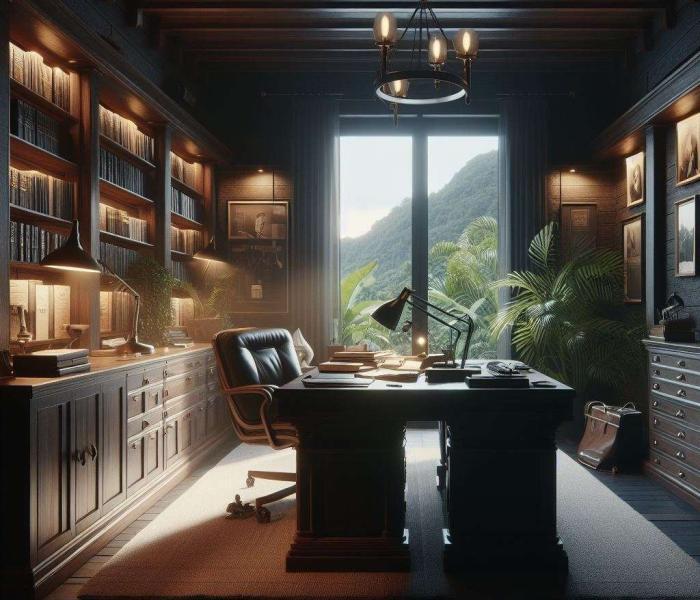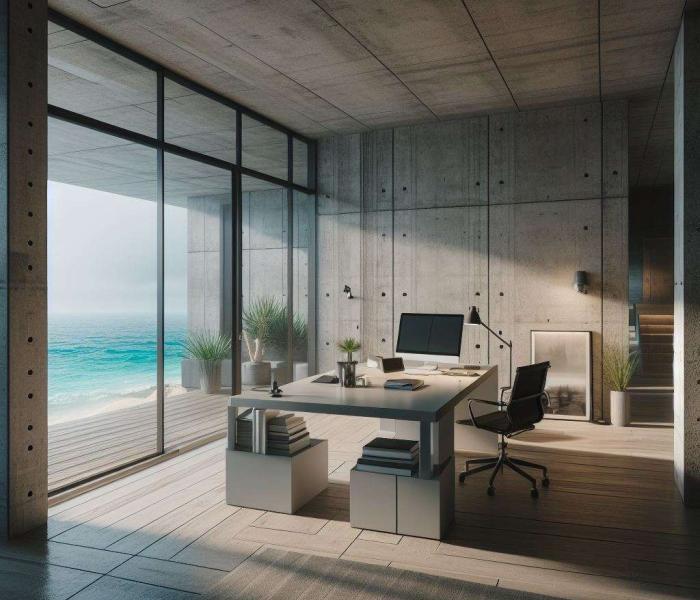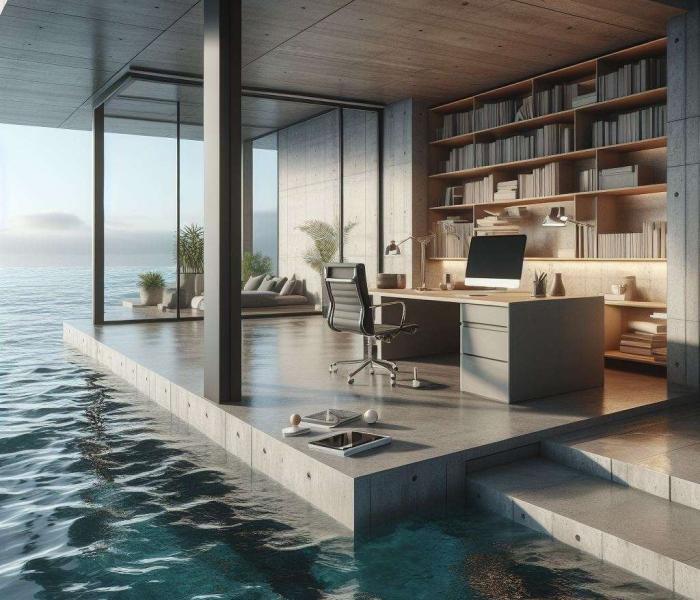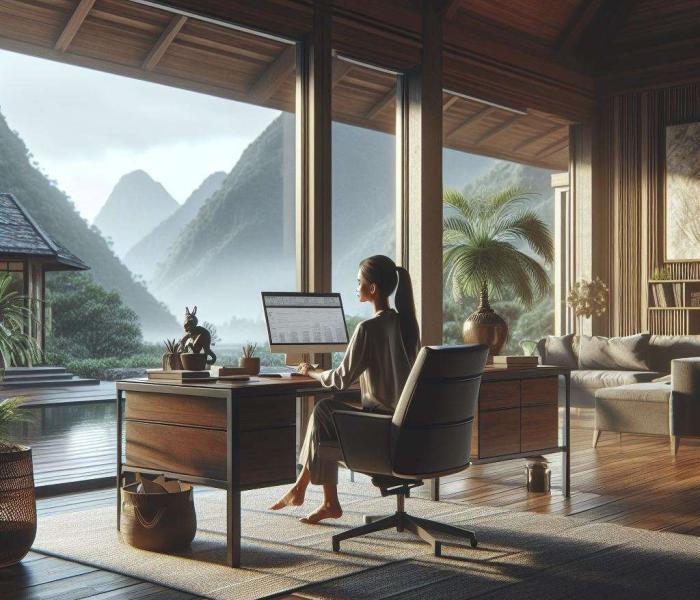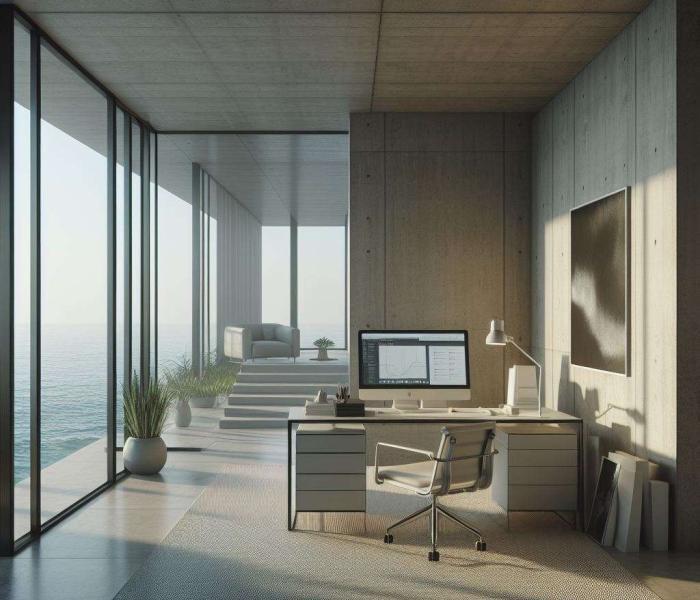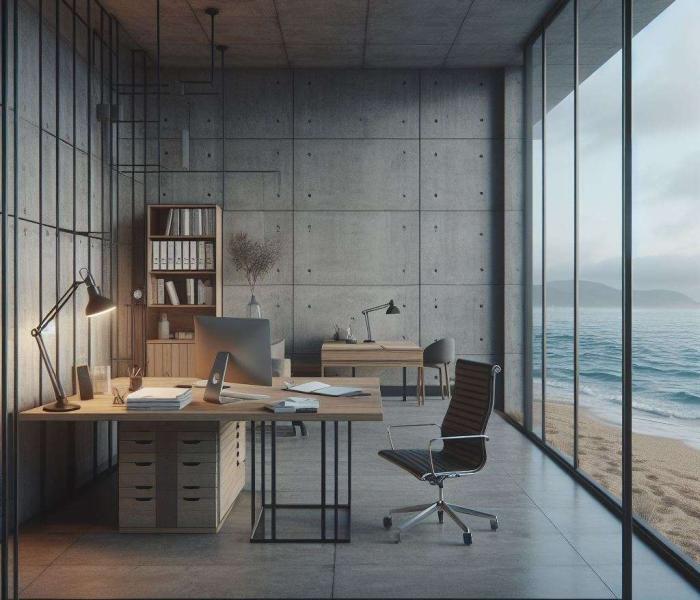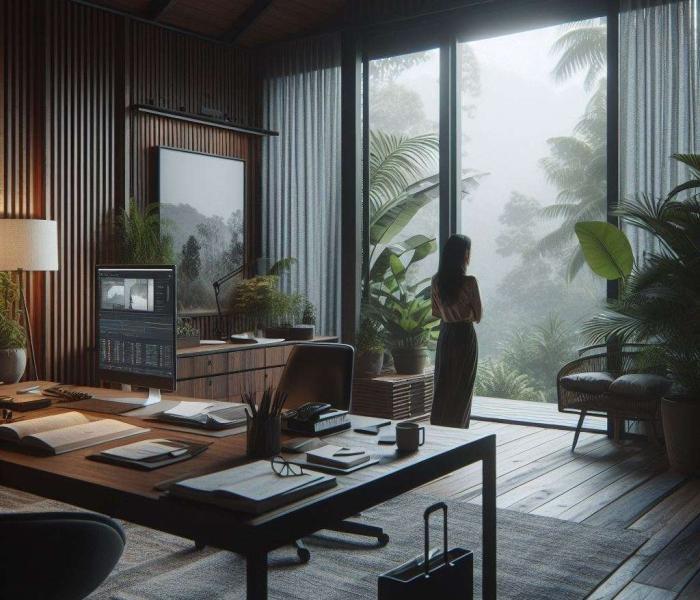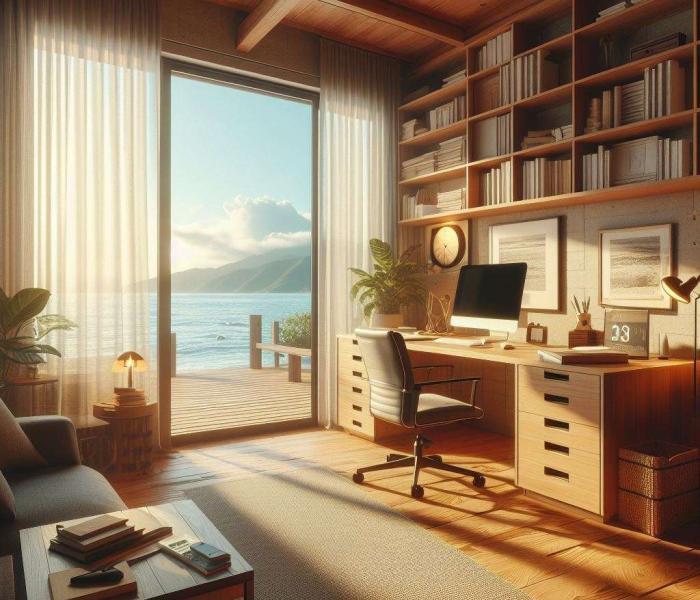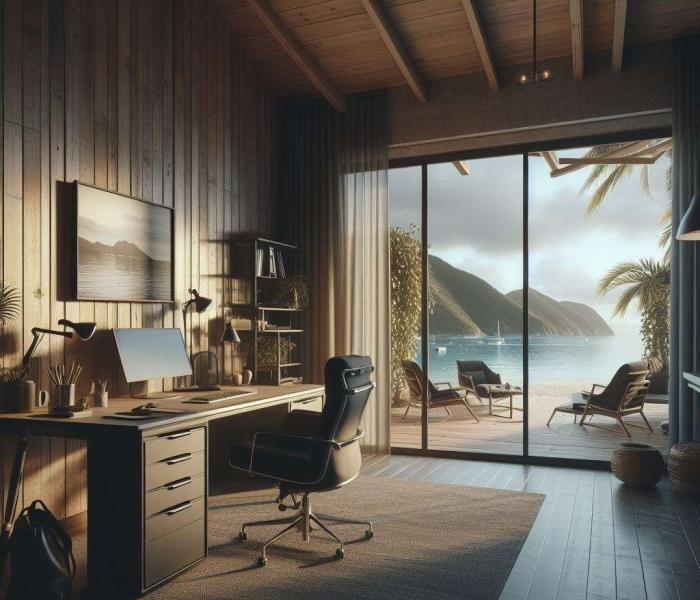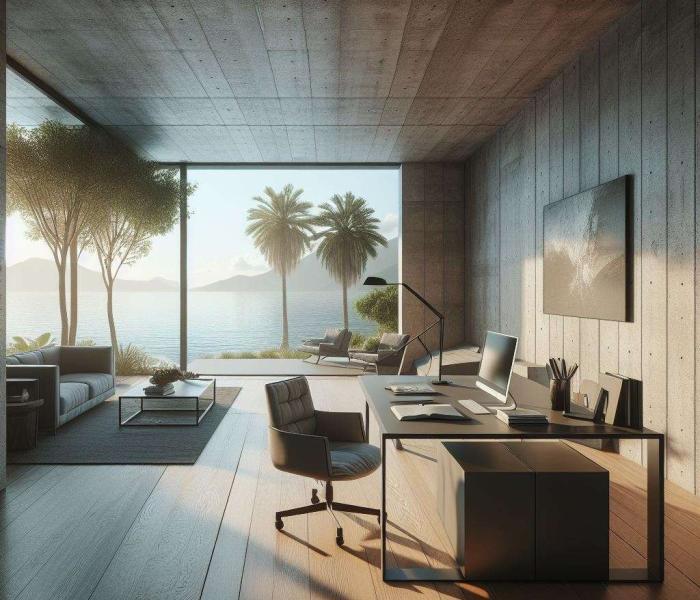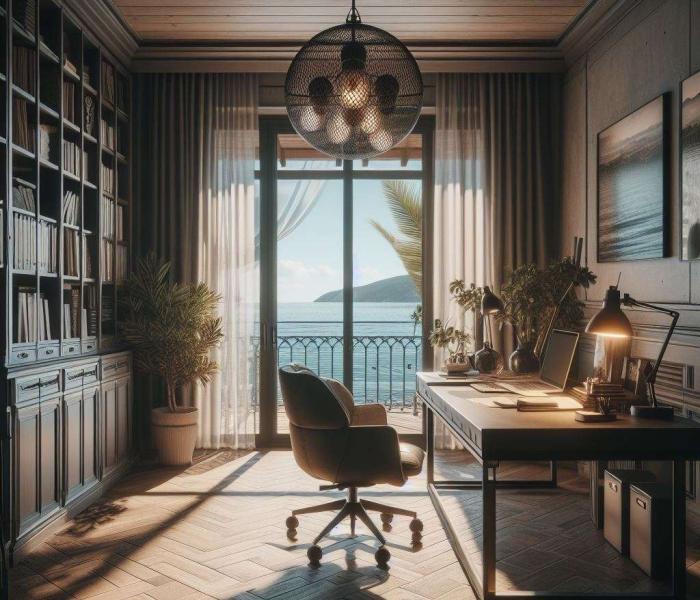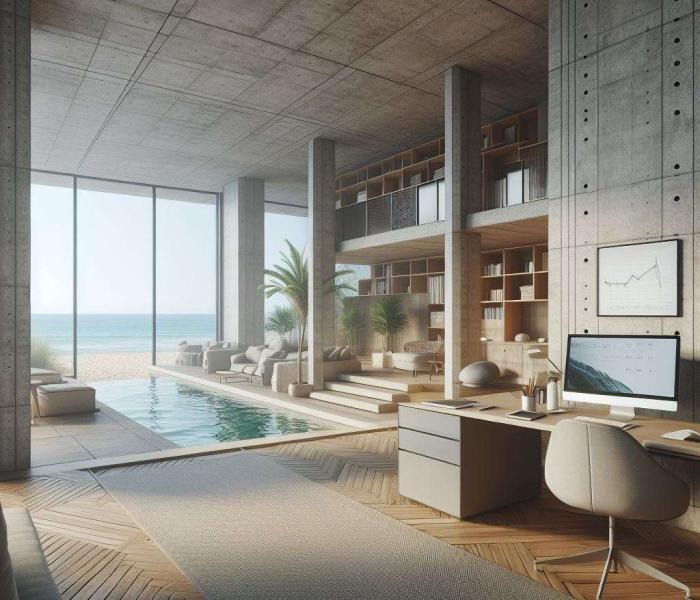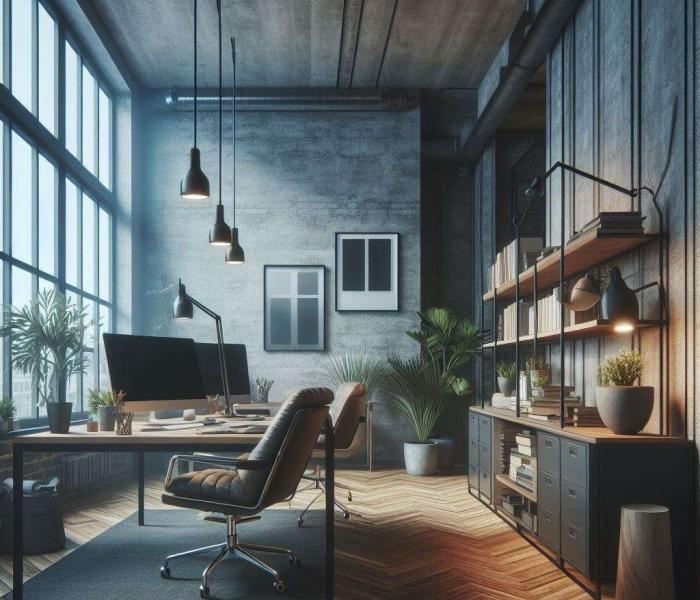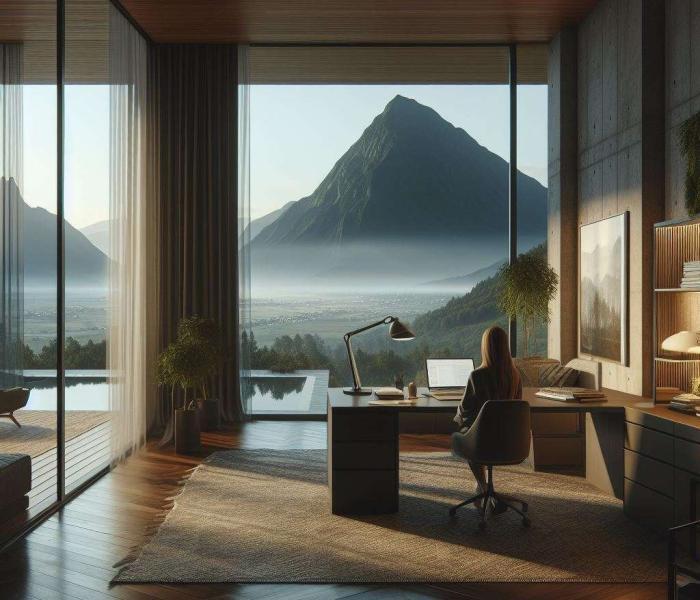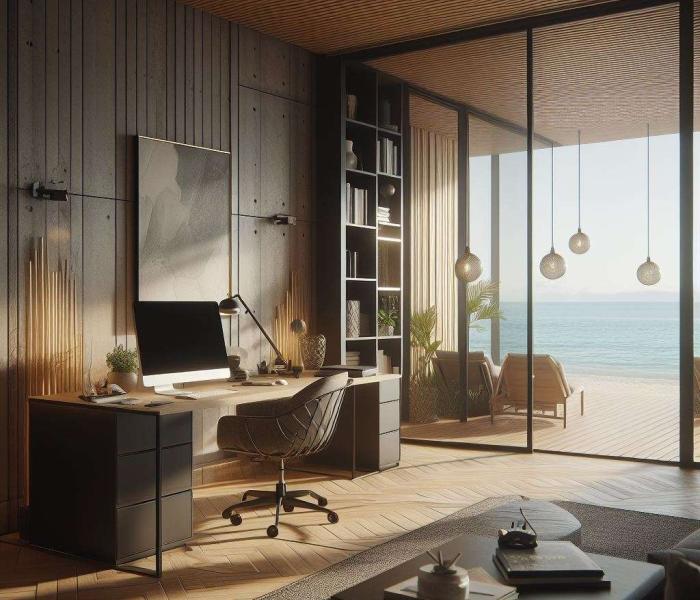AI Based Design
Office Design
The office in a modern house embodies the union of minimalist design and functional elegance. Large windows flood the space with natural light and offer views of the urban environment or landscapes.
The design of the office is characterized by clean lines and sleek furniture that emphasizes a modern aesthetic. A focus on straight-lined desks, ergonomic chairs and innovative technology creates a productive work environment that is nevertheless integrated into the contemporary ambience of the home.
The interior design of the office follows a minimalist approach that focuses on functionality. A clean color scheme and smart room design will make the space feel spacious and organized. Creative details such as works of art or innovative lighting set accents and give the room an inspiring atmosphere for efficient work.
Designing an office space involves considering various aspects to create a productive, comfortable, and inspiring environment. Some important aspects to consider include:
- Layout and Spatial Planning: Efficient use of space is crucial for productivity. Consider open-plan layouts for collaboration and communication, while also providing private areas for focused work and meetings.
- Ergonomics: Incorporate ergonomic furniture and equipment to support the health and well-being of employees. Adjustable desks and chairs, proper lighting, and ergonomic accessories can reduce strain and improve comfort.
- Lighting: Natural light is preferred whenever possible, as it boosts mood and productivity. Supplement natural light with artificial lighting that is adjustable and evenly distributed to reduce glare and eye strain.
- Color Scheme: Choose a color palette that promotes focus, creativity, and a positive atmosphere. Soft blues and greens can promote calmness, while pops of vibrant colors can stimulate creativity.
- Acoustics: Consider sound-absorbing materials and strategic placement of furniture to minimize noise distractions. Acoustic panels, carpets, and soundproofing can help create a quieter environment conducive to concentration.
- Technology Integration: Ensure the office is equipped with the necessary technology for efficient communication, collaboration, and workflow. This includes high-speed internet, video conferencing facilities, and integrated AV systems.
- Flexibility and Adaptability: Design the space to accommodate changing needs and technologies. Flexible furniture arrangements, modular workstations, and adaptable meeting spaces allow for easy reconfiguration as the organization evolves.
- Biophilic Design: Incorporating elements of nature into the office space can improve well-being and productivity. This could include indoor plants, natural materials, or views of nature if possible.
- Brand Identity: Reflect the company’s values, culture, and brand identity through the design elements, such as color schemes, artwork, and signage.
- Wellness Amenities: Consider integrating wellness amenities such as quiet rooms, meditation spaces, or fitness areas to support employee health and work-life balance.
By addressing these aspects, an office space can be designed to foster productivity, creativity, and employee well-being, ultimately contributing to the overall success of the organization.
